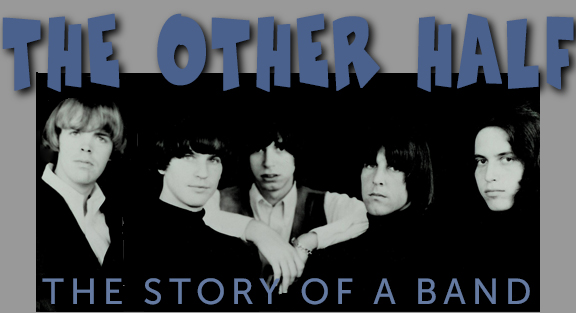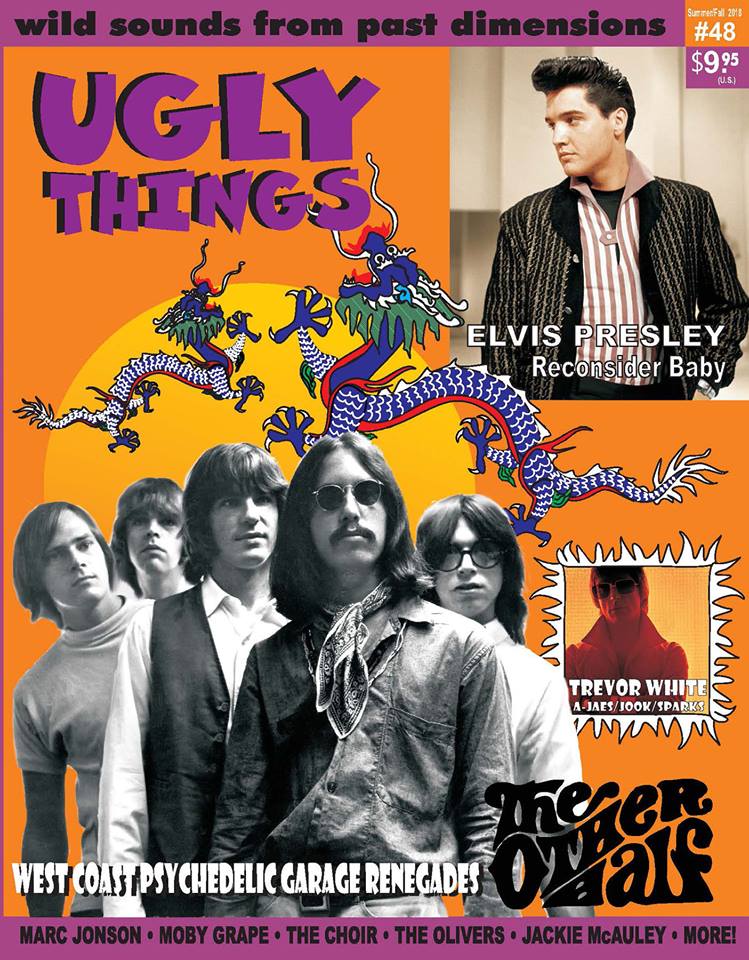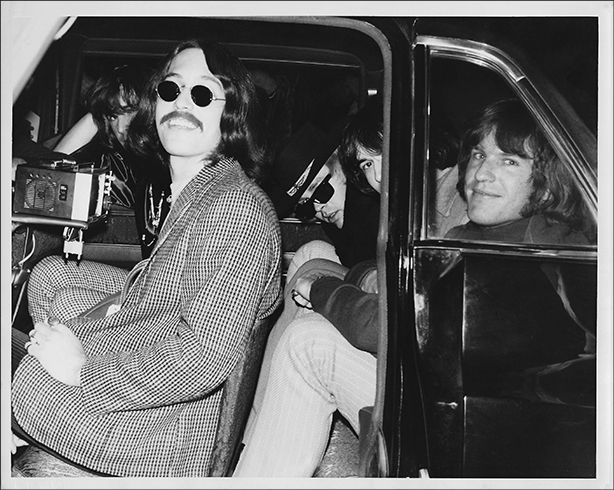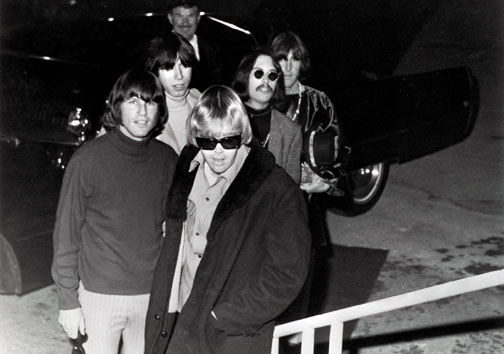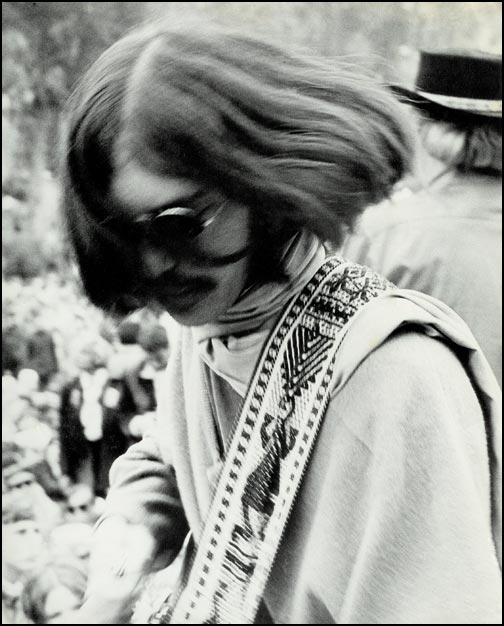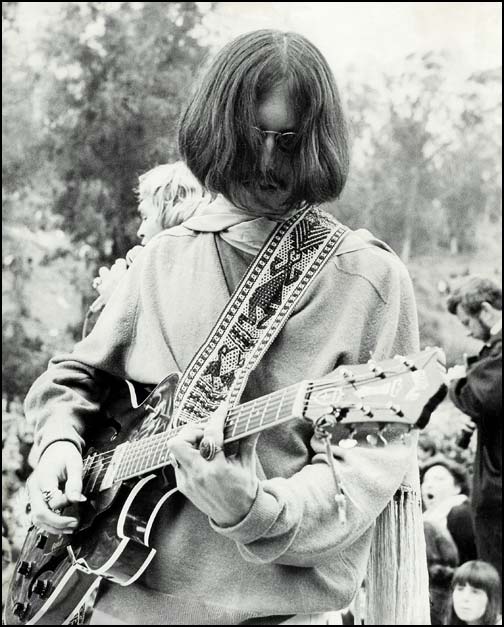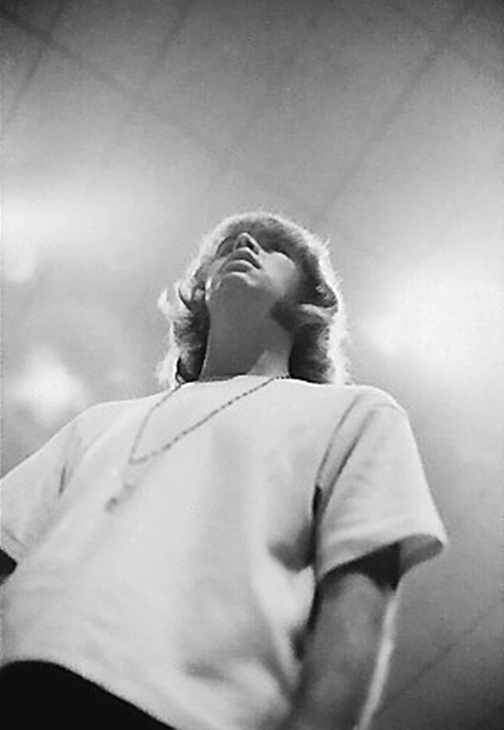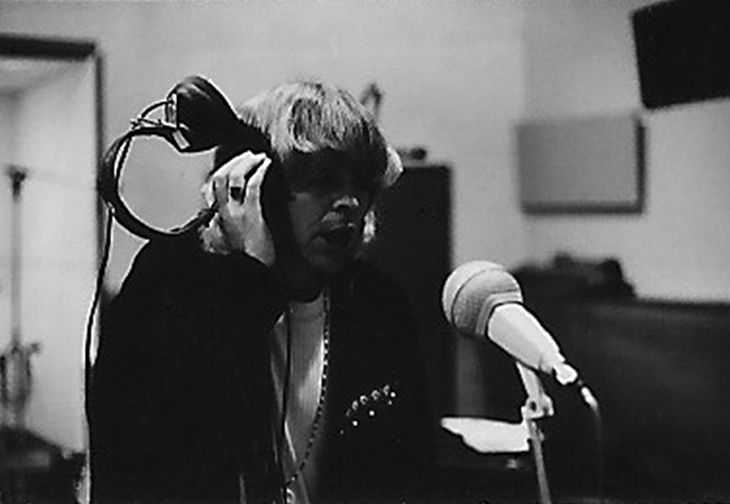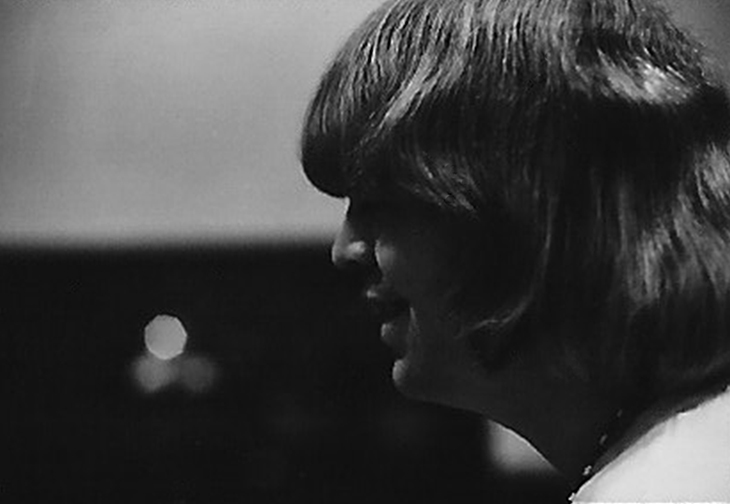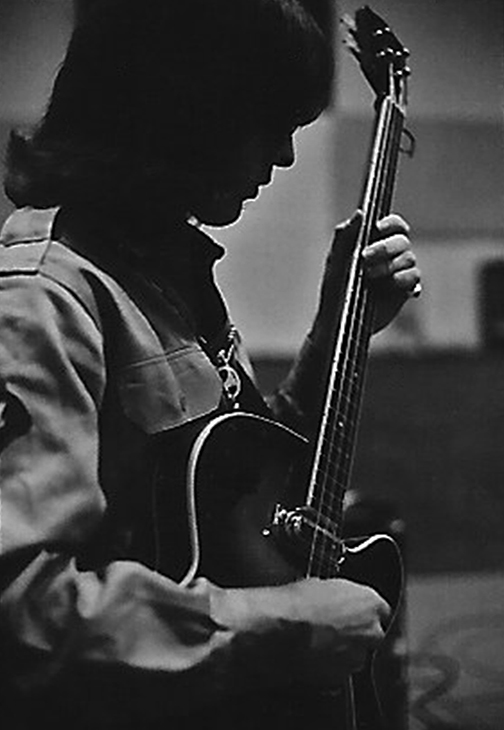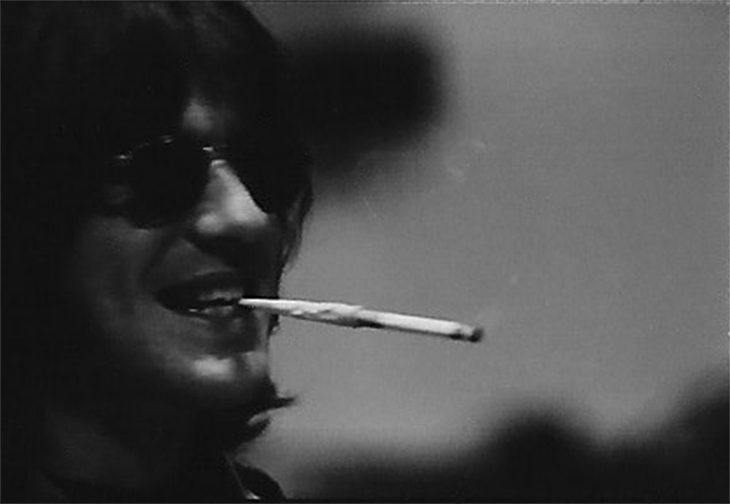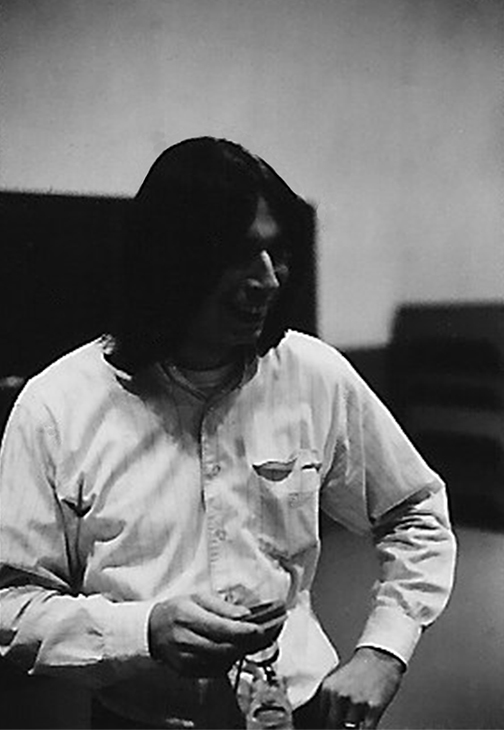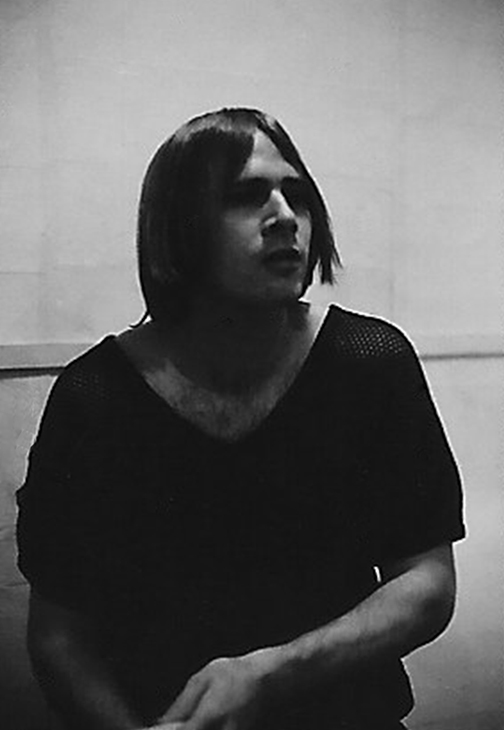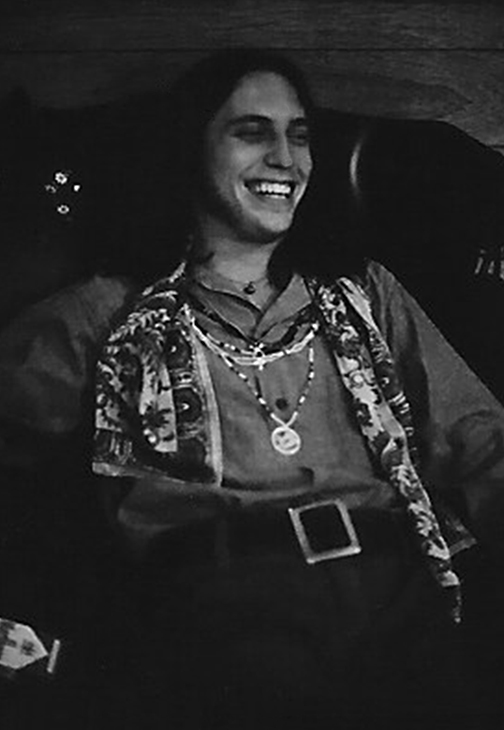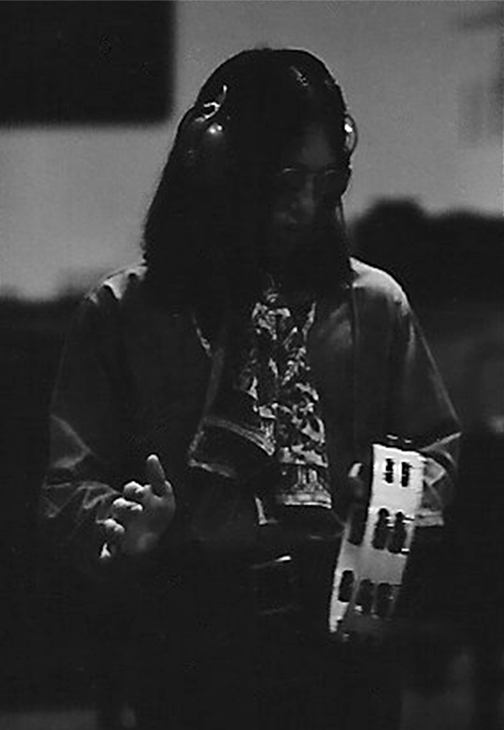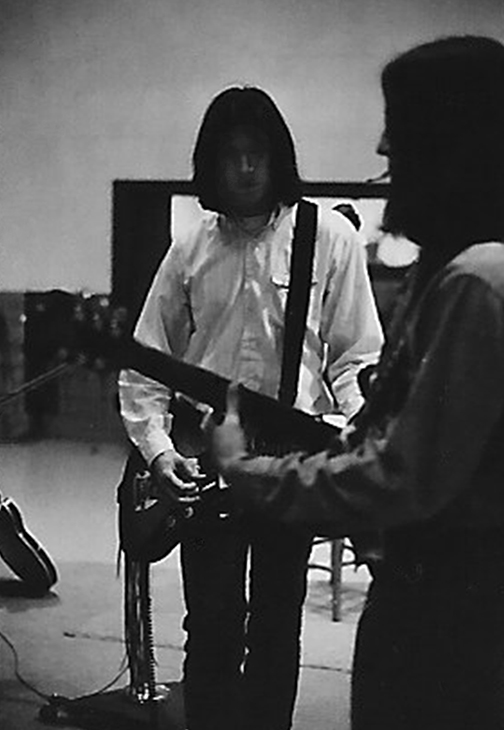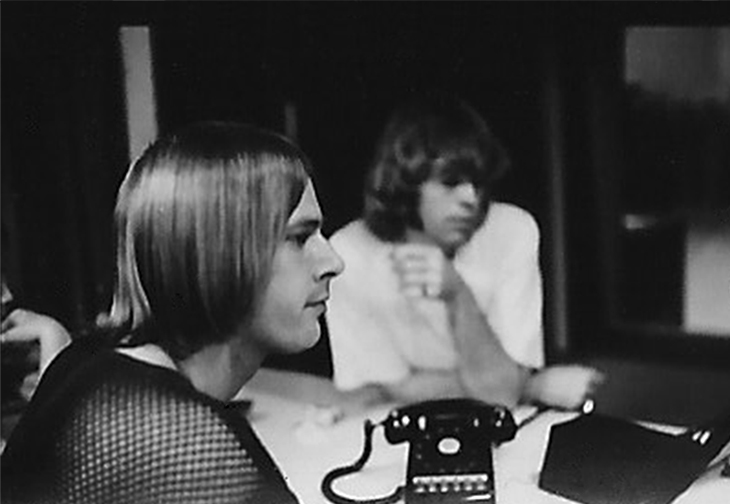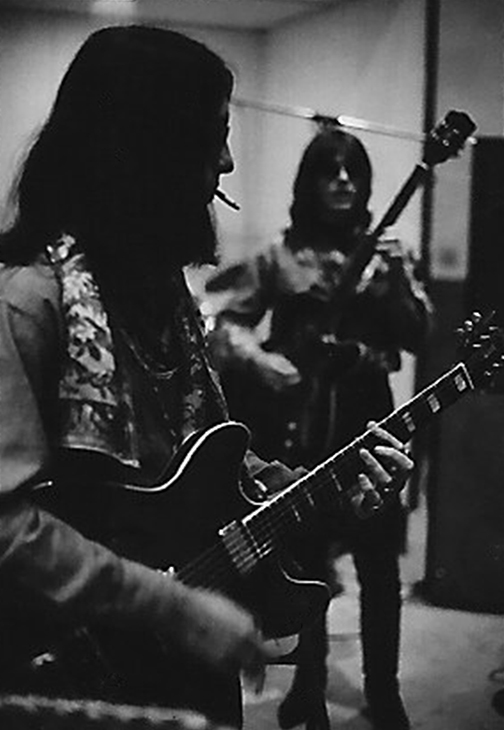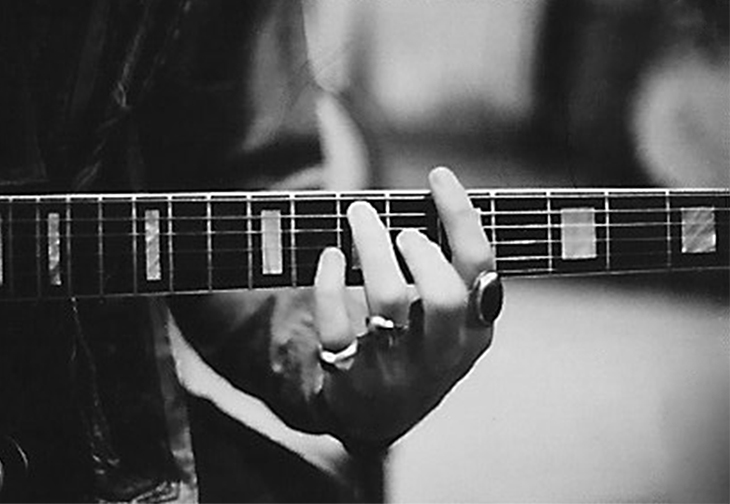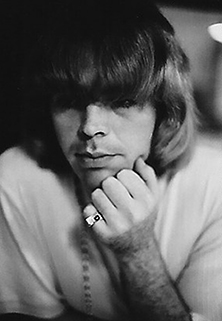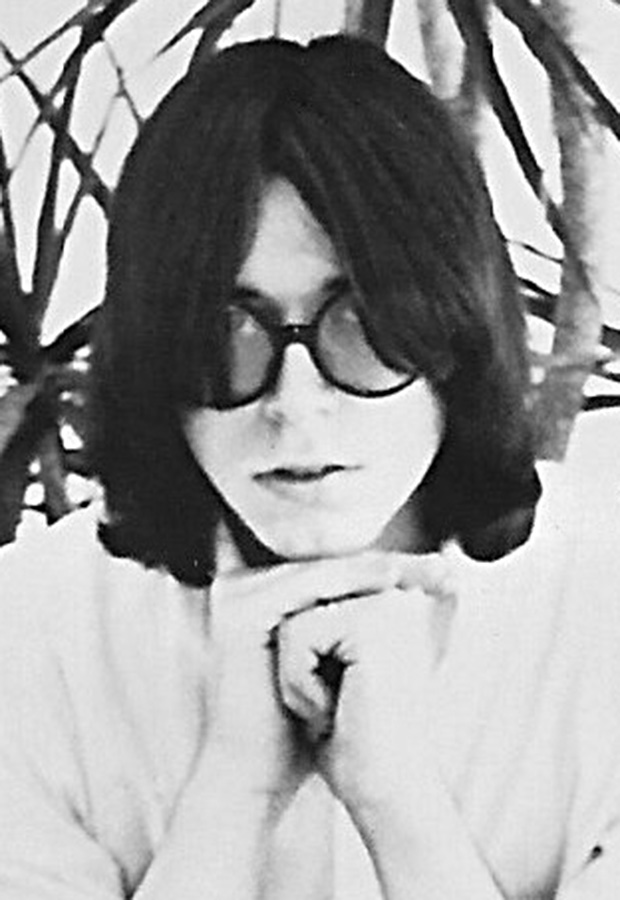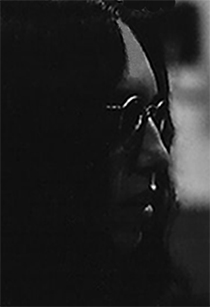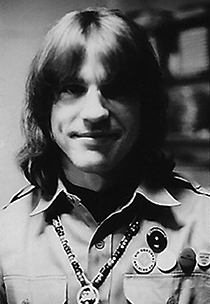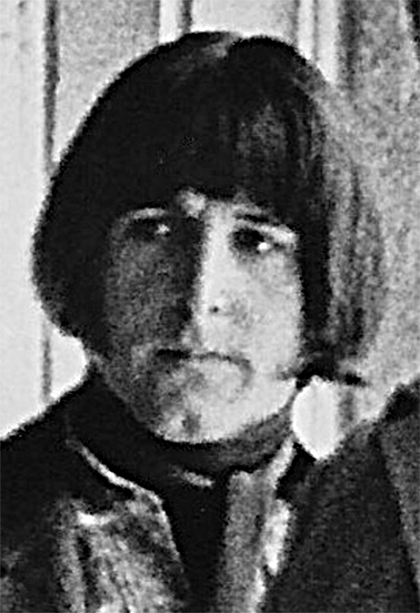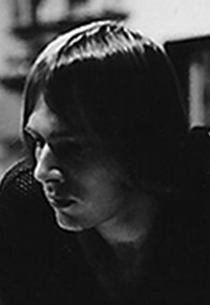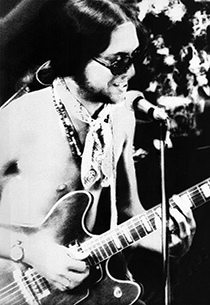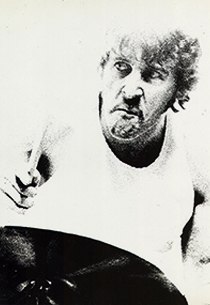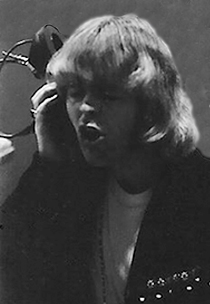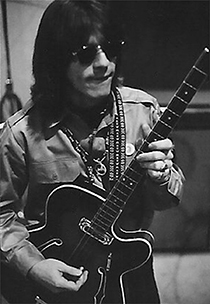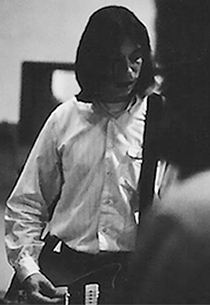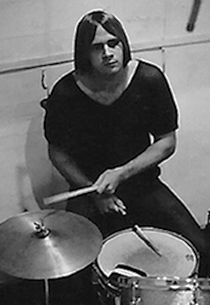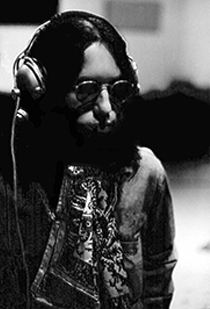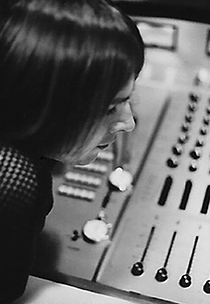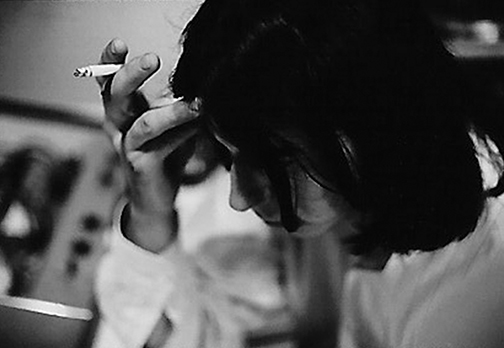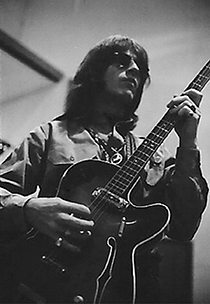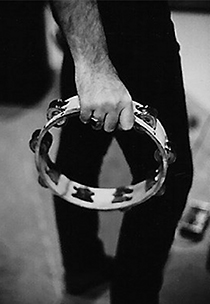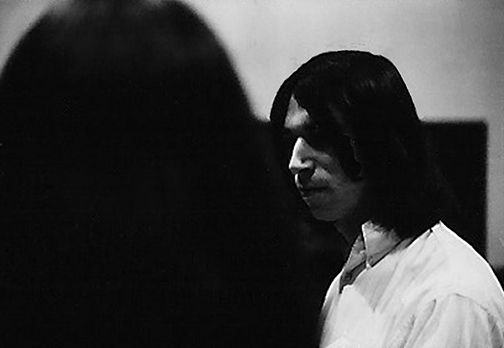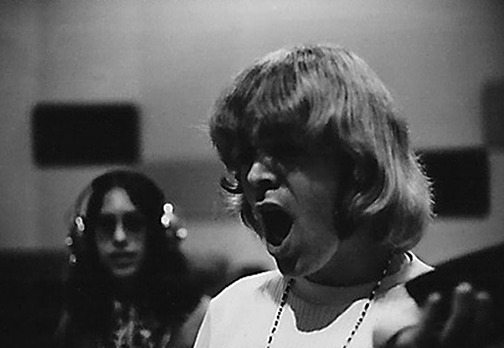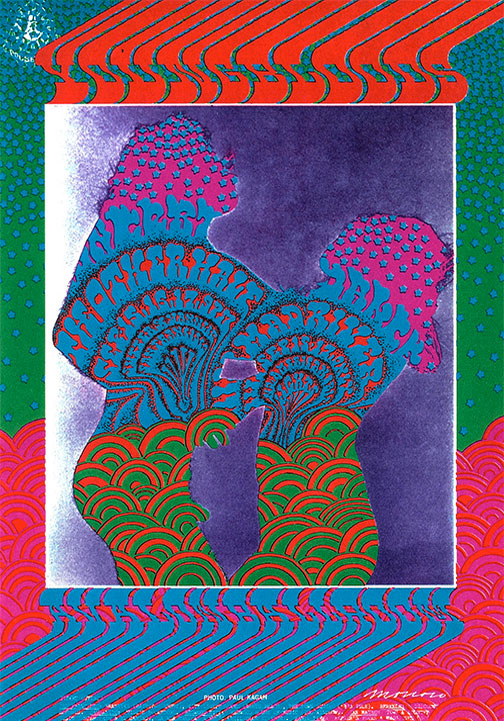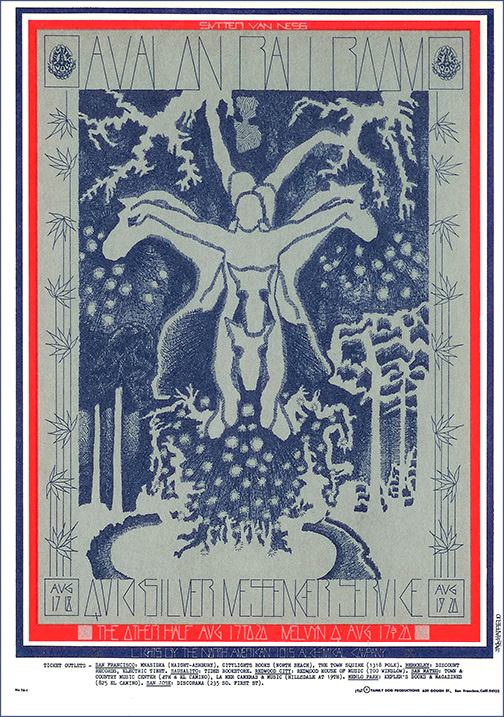The Other Half…of what?
By Mike Stax
"Other Half of what?" Larry Brown rolls his eyes. "We used to get that a lot!"
I was not able to find a satisfactory answer to that question, but what follows is the band's story—not just the other half of it, but all of it, for the first time, as told to me by the band members themselves.
The Other Half's records—five singles, an album, and an EP—are held in high regard by fans of high-powered guitar-driven psychedelic garage rock—even though, according to the band, these studio recordings don't come close to capturing the intensity and finely-tuned dynamics of their live shows. "The records are junk," states drummer Danny Woody. "They sound like shit, because they don't have the dynamics that the band had. See, the band could play so quiet that you could hear a mouse pissing on cotton, and then when the band cranked up, it was badass. I mean it was MASSIVE, big. But they didn't get that on the record. They didn't know how to record it back in those days."
Fifty-plus years later, though, the records are all we've got—and, to my ears, they're more than enough to seal their reputation as West Coast heavy hitters.
Yet today the Other Half are mostly known, if at all, for two things. Firstly, as the band Randy Holden played lead guitar with before joining Blue Cheer. And, secondly, as the originators of the song "Mr Pharmacist," covered twenty years after its original release by the Fall, who took their version into the UK charts. Beyond that, their existence has barely been documented beyond a few mentions in liner notes and fanzines, and the appearance of their name on a number of posters from the San Francisco ballroom days. Many collectors and music historians are not even clear as to whether they were a Los Angeles band or a San Francisco band. In truth, they were sort of both. But their story begins neither in Haight-Ashbury or Hollywood, but in Venice, California.

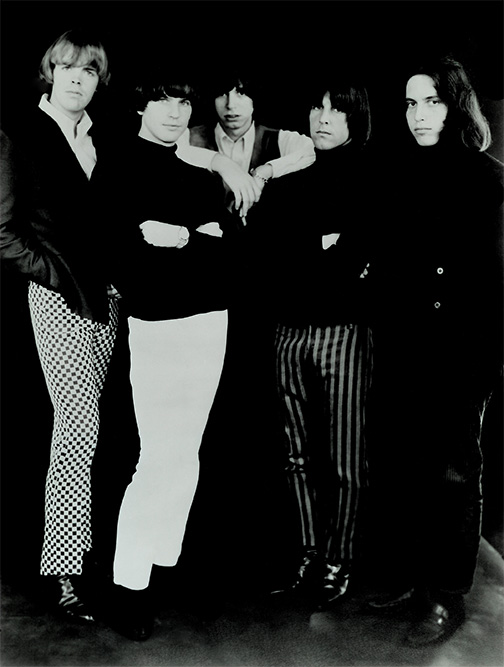
L to R: Jeff - Larry - Randy - Danny - Geoff


CHAPTER 1: Venice goes to Hollywood
Named for its canals, Venice, California is a beachfront community located on LA's Westside. Before gentrification it had a rundown bohemian vibe that earned it the nickname "the Slum by the Sea." In the fifties, it was an enclave for beat writers and poets such as Stuart Perkhoff, Philomene Long, and John Thomas, who hung out in coffee shops like the Gas House and the Venice West Café or at the home of Lawrence Lipton, who documented the Venice Beach beat scene in his 1959 book The Holy Barbarians. By the mid-sixties it had become home to a new generation of barbarian poets, musicians and filmmakers including Jim Morrison.
Famously, the Doors were first conceived in Venice. Less famously, so were the Other Half.
Tom Lennon grew up in Venice and remembers the crumbling sidewalks and the funky odor of the canals. Barking dogs would chase him along the canal streets as he delivered newspapers on his bike, and he'd pelt them with eggs snatched from the doorsteps along his route. Tom came from a large, extended musical family. The Lennon Sisters, Dot Records recording artists and stars of TV's Lawrence Welk Show, were his cousins. Before that, in the forties and early fifties, Tom's father had been a member of the Lennon Brothers, a vocal quartet that also included Bill Lennon, the father of the famous sisters. But while music was always around, it wasn't until he was around 12 years old that Tom was inspired to pick up an instrument and learn to play.
"I'm from a family of 13 kids," he explains. "My older sister and I, she's the second oldest and I'm third oldest, would typically babysit the younger kids when my mom and dad would go out, and in the fifties, I'd say around '57, '58, we used to watch something called Town Hall Party on I think it was Channel 5 in LA. It was basically a country & western variety show and it had a brother-sister act called the Collins Kids. Man, we used to hope they'd be on—because they weren't on every week, they were kind of special guests, so we would watch for them to come on. As I recall, [Larry Collins] was about 14 at that time and I was 12, and his sister [Lorrie] was 16. I wanted to be him and I had a crush on her. I was just so impressed by his showmanship, his ability to deliver a performance and make it fun, and his ability to play guitar. So that inspired me to actually do some guitar playing. I was really taken by the whole thing."
For around $30, Tom's parents bought him a guitar and some lessons, and he was off and running. However, it would be several more years before he got around to forming a band. After graduating high school in the summer of 1964, he enrolled at Loyola University, but flunked out—"or drunked out, I had a drinking problem at the time"—after a couple of semesters. In early 1965, he got a job at MGM Studios in Culver City working in the mailroom alongside his friend Tommy Russo, who he'd known since his school days in Venice.
"MGM had like five mail routes it was such a big place," remembers Tom, "and you would deliver mail to the sound stages and various offices around the different lots where they would be filming. In fact I delivered a telegram there to Elvis Presley once. I didn't get to hand it to him, but I got to see him on the set of some racecar movie he was doing [Spinout]. I got to hand the telegram to his manager, Colonel Tom Parker, and I got to see Elvis but I didn't get to actually talk to him. But that was kind of cool."
It was in the mailroom that the Other Half first came together. "A group of us were working in the mailroom of MGM Studio there: Tommy Russo and myself, and Jeff Nowlen who became the lead singer for the Other Half."
Born May 12, 1943, Nowlen was a child of Hollywood who'd no doubt scored the mailroom gig through his Uncle Al, his mother's brother. Al Trescony was the head casting director at MGM, having started out in the mailroom himself more than twenty years earlier. His wife Angelita worked as a secretary on the lot. Jeff lived with his grandmother in a large house in Beverly Hills.
In the beginning, though, the group had another lead singer, Jeff Pasternak. Another Hollywood rich kid, Jeff's father was Joe Pasternak, a successful MGM producer who'd recently made two Elvis movies, Girl Happy and the aforementioned Spinout. "Jeff Pasternak was a kid maybe a year or two younger than me and he worked there as well at the mail room," Tom recalls, "and he had ambitions of being a lead singer, harmonica player, you know, bad guy. So Tommy Russo and me and Jeff Pasternak started messing around trying to do some stuff. And then Jeff Pasternak had a friend named John Branca. He was a keyboard player and played a little guitar. And then there was also a guy named David Lacey, who was another friend of John Branca—these were all through Jeff Pasternak, as I recall—who played bass. Tommy Russo was a wannabe drummer. He admitted himself he wasn't very good, but he had lots of desire and chutzpah. He was good at getting us jobs and such. So we started messing around. So that was the group originally."
According to Tom's recollection, it was Russo who came up with a name for the newly-formed group: The Other Half. "I'd have to give Tommy Russo credit for that. He was kind of an avant-garde sort of individual in a quirky way." To make it official, they had a sign made up. "Tommy Russo knew a gal that worked in the art department, and she made an Other Half sign, a poster that we put on an easel when we played. It was probably about a 4 x 4 or 3 x 3 poster board and it had 'The Other Half' in really cool script."
Two years later that cool script would appear on the cover of the band's album. But this original Other Half lineup didn't last for long. "Maybe we had one gig with Jeff Pasternak," recalls Lennon. "I don't even know if it got that far. It was just kind of obvious that he didn't have it. He was kind of a diminutive little guy—a nice enough guy but it wasn't happening, and that's when Jeff Nowlen came onto the scene. He was a Hollywood kid. He lived in Hollywood and was pretty up on the latest scene at that time which would probably be '65."
Tall, blond and hip to the latest mod fashions coming out of London, Nowlen was an ideal front man. "I would describe him as a Mick Jagger wannabe," says Lennon. "But he was good. He did the footwork and played the harmonica. He was tall. He had—not a great voice but adequate for the mission we were on, we were doing pretty much cover songs in those days."
Shortly after Nowlen joined, the group did a photo session on one of the MGM back lots, and printed up a flyer announcing: "BEWARE. The Other Half is coming."
The early group's repertoire consisted primarily of songs by the Kinks, the Yardbirds, the Animals, and especially the Rolling Stones ("I don't think we did any Beatles songs," says Tom. "That was too tame or something!"). When the Stones came to LA in May 1965, the Other Half decided to meet their idols.
"When the Stones came to town, we got word through Jeff Nowlen that they were going to be staying at the Roosevelt Hotel," remembers Lennon. "He had heard through an inside source. So we went to the Roosevelt Hotel—I think it was Jeff Nowlen and myself; I couldn't tell you who else it was, I don't remember—and sure enough here comes the Stones walking through the front door. Actually Mick Jagger wasn't with the group, but the rest of them were: Brian Jones and Bill Wyman and Charlie Watts and I think Keith was there.
"Anyway, so we were just in the lobby and they come walking in, and we were, 'Hey, how you doin'?' I remember I had a Pendleton wool shirt on—it was kind of a surfer shirt—and leather sandals. I was kind of a California surfer kid, but we had our band started. So we're standing there talking, and they go to the elevator so we walked into the elevator with them and we go up to their room. They had two rooms across the hall from each other. And so we go to their hotel room—it was so bizarre! I couldn't believe it was happening. So we walk in and they turn on the TV and go to the news because they want to see themselves on TV."
On the TV was a news report about the Stones' arrival at LA Airport earlier that day, and a few moments later, Tom Lennon was horrified to see himself on the screen being interviewed. "We'd started out earlier that day going the LA Airport where they came in," recounts Tom, "and there was a big hoopla. One of the local stations, Channel 9 or 7 or somebody, was interviewing people in the crowd who were excited to see the Rolling Stones, and they interviewed me on camera. They said, 'What do you think of these guys?' So here I am in my Pendleton shirt and my leather sandals looking like a surf kid in California, and I put on a fake British accent!" he laughs. "I can't remember what I said, but I think it was something like, 'Oh, I think they're fab. We love the Stones!' It was so bad!"
Everyone in the hotel room burst out laughing at this, including Tom. Shortly afterwards, the California kids made their excuses and left. "At some point we were embarrassed just to be in their room so we just left. But we were all high-fiving each other like 'That was cool, huh?' What a surreal thing to happen."
Invigorated by their encounter with the Stones, the Other Half continued to rehearse in the rec room of the Lennon family home on Superior Avenue in Venice, as well as playing club dates, parties and dances throughout the Los Angeles area. The scene around the Sunset Strip was exploding, and when they weren't playing themselves the Other Half members sometimes hit the scene, consuming unearthly delights such as Love at Bido Lito's, the Byrds at Ciro's, Buffalo Springfield at the Whiskey, and, at Gazzarri's a group called the Sons of Adam, whose lead guitarist would later play a rather significant role in the Other Half's history.
In early 1966, at Brave New World on Melrose the Other Half opened for another up and coming group, the Doors. "That was I think our first paying gig, so to speak," remembers Tom. "I remember we had a gig there and then we had a local party to play at in east Venice or West Los Angeles. So we did a set, maybe 40 minutes, at Brave New World and then the deal was we were going to get a percentage of the door. That was the contract we had with the owner. So we finished our set and we're packing up to leave and we go to the owner and said, 'Can we get paid?' There was like four people in the club when we were playing, and the guy said, 'Well, actually your drummer had a Coke and so he drank up your profit!' [laughs]
"But coming on right after us was the Doors. We didn't know who they were at the time, they weren't famous yet. We heard a little talk, something about UCLA, these guys went to school there or someone did. So we stayed and watched the first several songs, and Jim Morrison was drunk, as I recall. I remember him standing on the microphone stand with the microphone on the pole and kind of holding on to it to keep his balance without falling over while he's rocking this thing. That was our big Doors experience."
They didn't know at the time that the Doors, like the Other Half, had first materialized in Venice—more specifically as Ray Manzarek and Jim Morrison walked on the beach there. "A few months later when they came out with their records, it was probably Jeff Nowlen who said, 'That's the band we opened for at Brave New World!' I was like oh my god! We didn't even know how close we were to those guys at that time."
Tom also remembers this lineup of the Other Half playing at Pandora's Box on the Strip. "I remember we were getting ready to play, we had just tuned up, and all of a sudden Tommy Russo breaks into a drum solo all by himself—and it was good! It was like, where did he come from? Where did he get that action? We all looked at him and he looked at us like, 'How about that, huh?' It was the strangest thing."
But while Tommy Russo was by now starting to get the hang of playing drums, and having a lot of fun doing it, he wasn't a natural drummer. If the Other Half wanted to move ahead they were going to need a more accomplished player in the drum seat.
Danny Woody remembers seeing the Other Half at around this time, perhaps at this very show. "I first saw them at a club in Hollywood," he remembers, "and they had a drummer named Tom Russo. Russo was just kind of a guy that was playing around on drums; he really wasn't that much of a qualified drummer, although he was a powerful guy in his own right. I knew him forever, went to school with him, but he wasn't a drummer and they wanted a drummer. So we got together and played together and they said, 'We want you in the band.'"

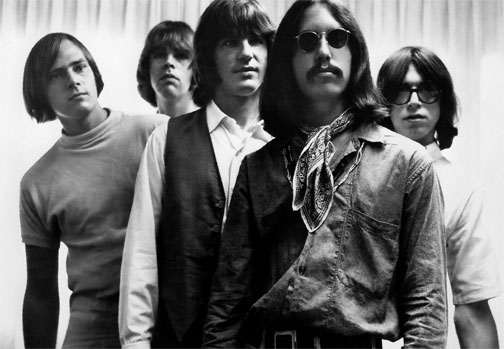
L to R: Ron - Jeff - Larry - Geoff - Randy


CHAPTER 2: Woody and Westen
Like Lennon and Russo, Danny Woody was from Venice. "In those days we called it 'where the debris meets the sea,'" he quips.
"Tommy Lennon was the one who started it," says Woody. "He was a dear friend of mine. Matter of fact, first time I ever played was with Tommy Lennon. We used to play the parties down on Venice Beach. It was him playing guitar and me playing drums. Down in Venice they had all those big houses right on the beach you could rent for nothing. A lot of guys were renting those houses and just having big parties. It was a wild scene down there. He wanted to play a little guitar and drink some beer, and I wanted to play a little drums and smoke a little weed back in those days. We were doing rock & roll and blues, just whatever we could come up together with. Whatever he played I'd just follow along."
Tom Lennon remembers, "My sister Virginia—four years younger than me—reminded me that she had a crush on Danny, and would peek out the bathroom window of the house to watch him use his practice pad in the backyard. She had quite a vivid memory of him: tan, broad-shouldered and shirtless, wearing faded red swim trunks. She said my mom even jostled her for a peek once!"
Woody's love affair with the drums had been sparked a few years earlier. "I was down in Palatka, Florida and I met a drummer who played with [jazz singer] June Christy who was working at my stepfather's club, Don's Steakhouse. I was the cook at the time and I got enamored watching him playing drums and he started giving me a few lessons. Then I went back to Los Angeles where I met my oldest friend Richard Sanders. He knew of a drum teacher, a guy named Skip Falls, so I started studying drums with Skip Falls who wrote the Ice Capades."
Falls was a serious drum teacher, and wanted to be sure his new student was as serious about playing the drums as he was. "He sat me down first and said, 'Look, I'm going to ruin your life by teaching you how to do this. Are you really ready to do this? Because look at me, I'm working for the phone company and my wife's a dancer and we just don't want to go on the road anymore.' He said, 'If you want to play rock & roll or something like that, I'll take you down to this other guy in Santa Monica who can teach you, but if you really want to be a drummer, I'll teach you how to do that.' So I went with him. I studied with him for three-and-a-half years. He was an amazing teacher and an amazing human being. He taught me all the drum rudiments and I just fell in love with the drums. I was a surfer before so I traded my surfboard for this little old drum set that this guy had, a little old Ludwig WFL set, and started playing."
After playing around the Venice Beach party scene with Tom Lennon, Woody next joined an R&B band called 1984. "We played all the clubs around West LA and the beach," he remembers. "We played at a club called Players in Manhattan Beach for two years, six nights a week. The Waleback in Santa Monica was very popular; that's where I met Spencer Dryden." Dryden was playing a residency there at the time with the Ashes, who, after Dryden's departure, would evolve into the Peanut Butter Conspiracy.
It was soon after this that Woody saw the Other Half in action and subsequently displaced Tom Russo on drums. Woody's inspired playing elevated the band's sound immensely. But more lineup changes were afoot. It's not clear whether John Branca left before or after Woody joined, but Lennon and Branca still joke about the reason for his dismissal. "We let him go because he was only 15 or 16 and we got a job at the Reseda Bowling Alley lounge, and you had to be 18 to play!" laughs Tom. "So that was such a great job that we had to can somebody."
Branca joined up with another ex-Other Halfer, Jeff Pasternak, to form the Mustard Greens. After connecting with Music Machine producer Brian Ross in 1967 they recorded two excellent Doors-like singles for Original Sound, "Cotton Soul" (as the Pasternak Progress) and "Painted Smile (as Mad Andy's Twist Combo). Pasternak later moved to the UK where he formed the Krayon Angels with Darryl Read of Crusher Butler (an unreleased album surfaced in 2000). Meanwhile, John Branca went on to become a hugely successful entertainment lawyer and manager, representing, among others, Michael Jackson, the Rolling Stones, Aerosmith, Fleetwood Mac, and the Beach Boys.
Replacing Branca in the Other Half was Geoff Westen. "I think he came through Jeff Nowlen because he was also a Hollywood kid," remembers Tom.
Born May 26, 1946 (making him two or three years younger than the rest of the band), Westen grew up in the Los Feliz area, near Griffith Park: "I'm a child of LA and Sunset Strip and the whole thing." Geoff's father, Al Westen, worked in television and movies as a production manager or assistant director. As a kid Geoff appeared as an extra in some of the shows his father worked on. "He did a lot of B Western TV shows," remembers Geoff. "He did a show called My Friend Flicka, about horses and stuff [the show ran on CBS in 1956-57]. They needed young kids because these were shows for kids. I would go on location with him out to the ranches where they shot these things, and when they needed a kid to sit in the classroom or sit wherever the scene was, there would always be me and a few other kids around. 'Come on. Sit over here for this take' and we would sit there."
These occasional extra jobs continued when Geoff was in high school, when he appeared on
Mr Novak, a drama about a high school teacher that aired on CBS in 1963-65. "They used our high school as the school, and they needed kids for the classroom, so: 'Geoff, get ten of your friends and be at MGM on Monday morning at six o'clock.' That's kind of how it was. I didn't think anything of it 'cause I grew up in it, but I didn't know until after how popular I was because people wanted to do that. We went to MGM, we went to school there a couple of hours a day, and we were in the classroom scenes. It didn't last long because they got better people; we were just extras, but I guess they wanted a sameness to the classroom."
Coincidentally Jeff Nowlen and Tom Lennon were working on the MGM lot during this same period, but apparently their paths did not cross.
After skipping two grades, Westen graduated from high school early, and headed for the Sunset Strip. "Both me and my brother moved out of my parents' home really young. I graduated from high school two weeks after I got my drivers' license. I'd just turned 16, and I was out on the streets by 17, my brother Danny, too—he might've been even younger. It wasn't like we had a bad home life, it was just the town was ready for us. It was like I don't ever want to go home! This is too cool to go home!
[FOOTNOTE: Geoff Westen's brother Danny was one of the chorus vocalists on an early psychedelic/freakout LP, The Happening by Fire & Ice Ltd, released by Capitol in 1966. "He was a character," says Geoff. "He wanted to be a singer but Broadway kind of stuff. He was just wild. I was tame as a kitten compared to him." Danny died in August 1979.]
"Once I got out of high school I was interested in music because I loved rock & roll, and there were certain bands I was following—this was like '63, '64. I started going to clubs. Actually, Randy's band Sons of Adam was one of my favorite bands. I used to go and see them all the time at the club they would play at. It was just like a magnet for me. I was turning into one of the all-time great hippies. I just loved being involved in the music and what it takes to be a fan first. It took me a long time to be a musician and in a band; that was a learning process on its own."
Part of that learning process involved a short stint playing guitar in a group led by Marv Rosenberg, a former member of the Safaris (not to be confused with the Surfaris of "Wipe Out" fame), a vocal group who'd had a hit a few years earlier with "Image of a Girl." "It was really corny and we were just doing cover songs," Geoff remembers. "The band was called the Young Lovers—three guys and three girls—and that was my starting point in saying, 'Music is fun.' You rehearsed in your folks' rec room, that kind of thing, it wasn't very professional. We never played any official gigs. We had a guy and a girl drummer, and a girl that played maracas, and the girls had to be cute—they didn't have to have any talent. [laughs] Marv was one of the drummers and he couldn't play drums, and he would make us practice, practice, practice singing these corny songs."
Strumming some guitar with the Young Lovers was about the extent of Westen's musical experience when the opportunity came along to join the Other Half in the first half of 1966. Geoff doesn't remember for sure, but most likely he was approached by Jeff Nowlen, who was hitting the same clubs night after night that he was, including Gazzarri's, in its original location on La Cienega Boulevard, where the house band was the Sons of Adam. "Jeff probably found me at Randy's gigs," says Geoff. "I was a big fan of Sons of Adam. I hung out at their gigs all the time."
Soon Westen was making the drive out to Venice for band practice as the group continued to expand their repertoire of Stones, Kinks and Yardbirds material, along with songs like "Hey Joe" and possibly a few Byrds numbers. "I remember we used to hang out at Tommy Lennon's house in Venice," says Geoff. "He had a rec room behind the house and we would rehearse back there. We were all very green. Some of the guys had never really been in a band—myself included. But you get to a point where, 'Well, now we've worked up a set, we've gotta go play somewhere.' So amongst playing the normal round of bars, we played at a hotel lounge in Palm Springs. My folks had a house down in Palm Springs and they knew the owner of the hotel and they got us this lounge afternoon thing as a place for us to play, because we were starting out and were looking for places to play.
"That little lounge gig started the whole thing, because there were two guys in the audience who were on vacation in Palm Springs that happened to be the two makeup guys at KHJ Television in LA who for some reason fell in love with us. They walked right up to us and said they wanted to do something with us. And that was the start of becoming actually more of a real band than a fantasy band. We actually had something to work with and some goals, just because a couple of guys showed interest to maybe help us."
"Don Otis was this older gay guy who was the head of makeup at KHJ," remembers Lennon, "and then David Lawrence was his assistant, and he worked in makeup as well. They discovered us out in Palm Springs… We went and played on a Sunday afternoon or whatever it was and in the audience was David Lawrence and Don Otis and they approached us afterwards and said, 'Hey, you guys have a nice sound.' I'm sure there were a lot of people looking to manage bands and get on the ride, you know. So they talked to us about managing us and we thought it sounded pretty good. They said they had some contacts and such."
"They did a lot for us," continues Westen. "Remember, this is all first experiences for me. I just thought it was so cool to be in a band, and I wasn't very good; I was just learning how to play chords. I was really at square one. So the fact that these guys came in and they worked at KHJ was great for us."
[FOOTNOTE: Although all of the band members independently remember Don Otis as head of the makeup department at KHJ-TV, it's possible he may have had a higher-up role at the station. Billboard magazine articles in 1965 make mention of a Don Otis, a former DJ, working there as operations manager and/or program director for KHJ Radio. I have been unable to confirm whether this is the same person.]
Before they got to work though, there was still one more lineup change to be made. David Lacey's time with the group was up, so they were going to need a new bass player.


Jeff & Randy


CHAPTER 3: Framus Brown
Larry Brown was born in Oakland, California in 1943, but spent his formative years in Booker, Texas, and Wichita, Kansas. At 18 years old he enlisted in the Navy, which brought him back out to California, first to San Diego, where he trained to be an IC (Interior Communications) man. His younger brother Loren followed him into the Navy a couple of years later. Loren was a pretty decent guitarist so around 1964 they decided to form a band. John Dalton, another Navy friend, played second guitar, and their drummer was a local surfer kid by the name of Danny. As Larry didn't play an instrument at the time, he handled most of the lead vocals and also took up the harmonica, inspired by his favorite album, England's Newest Hitmakers by the Rolling Stones. "I couldn't play harmonica for shit!" confesses Larry. They called themselves the Exiles.
"We never could find a bass player," he remembers, "so one day they came home and said, 'We've found our bass player!' I said, 'Who is it?' 'YOU!' And I went, 'I can't play bass!' They said, 'We're gonna show you.' So we went out and got a decent amp and a piece of shit bass, Japanese, where the neck weighed about 15 pounds and the body weighed two pounds. It was awful. But pretty soon I was playing. We did pretty good. We tried to do all the early Stones, and we did surf music and we did Beatles—whatever was popular." After shipping out to Guam, the Exiles played some shows in Japan, before returning to Southern California where they played a lot of private parties in San Diego and Long Beach. Somewhere along the way, Larry ditched his cheap Japanese bass and got himself a Framus, the same model played by Bill Wyman.
By the time Larry and his brother got out of the Navy, their parents had moved to San Bernardino, so that's where they washed up in 1965 with no immediate plans for the future other than continuing to play music. "My stepdad was always hard on me," remembers Larry. "His dad was hard on him, he was hard on us. When we got out of the Navy where we had the band, my dad said, 'You guys, is that what you're gonna do?' I went, 'yeah!' He said, 'Then what are you hanging around here for?' I said, 'Well... what do I do?' He said, 'Go to Hollywood, otherwise you'll be playing clubs here and doing shit nothing.' So I moved to Hollywood with my brother."
The Brown brothers moved into a tiny apartment together. "The whole place was about as big as a bedroom with a walk-in closet," remembers Larry. "We had a little tiny kitchen, a little tiny bathroom, one room, and a walk-in closet. My brother put his bed in the walk-in closet, it was big enough, so that was his room, and I slept in the living room.
"Right after we got there we went down to join the [AFM Local 47] union. You had to get into the union, that's what everybody told us. So we got into the union and started watching the bulletin boards and after a month or not even two, a short time, my brother decided to go back to college. He wanted to be a geologist. I thought he was nuts, you know, like, 'Are you kidding me? You wanna do that when you could be in Hollywood playing music?' So that left me all alone.
"So every day I went down to the union hall, which was down on Vine Street, and I would check in the bulletin boards for any gigs. Any gig. I'm on my own now. I got a little funny story about that. Talk about naïve, I go in there every day and there was a lady who worked there, she handled all the assignments, her name was Billie something. She was in a wheelchair at her desk. She was a great gal. And I'm looking over the thing, you know, running my finger down, like 'maraca players... tambourine players...' She said, 'What are you looking for?' I said, 'I'm looking for a gig for a bass player.' She says, 'OK, come over here.' So I came over to her desk. She goes, 'OK, you're looking for a gig as a bass player. Do you play string bass or Fender bass?' Well, I played a Framus like Bill Wyman. So I said, 'Well, neither one really.' And she says, 'What do you mean?' She says, 'Look... [laughs] Does it look like a big violin or a guitar?" [laughter] 'Well, a guitar, but it's not a Fender.' And she goes, 'It's a Fender bass.' That's what they called every [electric] bass—a Fender bass."
Eventually Larry's persistence paid off. "A couple of weeks after my brother left, I went down there and there was a gig that said, 'Other Half' and 'contact this guy' so I did."
The audition process, most likely at Tom's house, was not exactly arduous. "These guys were all big Stones, Yardbirds fans," remembers Brown, "so when I walked in for the tryout they looked me over and they were all [mumbling] 'He's dressed right, he's OK.' Then when I opened that guitar case and took out that Framus bass, they said, 'You got the job!' I hadn't even played it yet! Jeff Nowlen said, 'You got the job.' 'Don't you wanna hear me play?' He goes, 'Can you play it?' I said, 'I think so.' We all hit it off right away. I stumbled into it. All of a sudden I'm playing with a band. They already have managers and they've looked into making records and the whole thing. I couldn't even believe my good fortune."
Larry soon got to know the other band members and the odd meld of personalities that gave this lineup of the band its unique chemistry.
"Jeff Nowlen was a big tall guy, very funny in his own way, a big goofball," says Larry. "He could sing OK. He could perform. Good harmonica player. He was a huge fan of Mick Jagger and the Stones and Arthur Lee and those guys. He put on a pretty good performance and he was always looking for any new trick, any new dance step he could do. He was pretty good at that.
"Tommy Lennon, he had been a surfer, a California boy. He was really a funny guy, too. I really enjoyed his company. He was a great guy and he played pretty damned good. He was like the cousin of the Lennon sisters. So Tommy's family was established and he was a good guy.
"Geoff Westen, I didn't know quite what to make of him!" he laughs. "At least at first. I think he lived like you were from Mars. To me, he was out there some place. He was the first guy I knew who had really long hair. He didn't like to wear shoes, he was always wearing beads. He was never realistic. The logistics might present a problem, like, how we gonna get there? 'Oh, I'm sure it'll all work out.' It did in some way, but his attitude was, 'Oh, I'm sure it'll be fine.' 'I don't know where you get your information, it's not gonna be fine. We're gonna have to make it fine. He was just totally a free spirit."
As for their drummer: "Danny Woody was a jazz aficionado. He loved Art Blakey and the Jazz Messengers and those guys. We all felt like he was kind of like Charlie Watts—he'd been a jazz player and all of a sudden now he's playing rock and brought a lot of good stuff with it. Danny turned me on to a lot of stuff, a lot of music."
For Woody, the feeling was mutual. "Larry's a beautiful guy," he reflects. "He might be my favorite, as a human being. He and I are the same. He likes cars, I like cars. We were the rhythm section: I looked over at him, it was a nice day when he was standing there; it really was."
"Larry was Bill Wyman!" says Geoff. "That Framus bass; just the way he held it and everything. It was so cool!"
"All the guys were more sophisticated than I was," reflects Larry. "Geoff Westen's dad was a movie director [assistant director] for 20th Century Fox. Because of that we got to go to a lot of movie stuff. We had access to Western Costume [the famous Hollywood costume company] so we could get the big frilly Tom Jones shirts if we wanted. We could check stuff out because of his dad. It was fun doing that. Not a care in the world, not a nickel in our pocket. We learned to eat spaghetti with ketchup, butter, anything you could put on it, just to survive."
"It was all about the band and nothing else" agrees Westen. "Eat, sleep and poop, and after that, it's all band!"


Geoff & Larry


CHAPTER 4: High Desert
Shortly after Larry joined, the Other Half managers—Don Otis Enterprises—bundled the group off to a remote ranch house in the high desert for some intensive rehearsal sessions. Up in the desert, with no other distractions, it was going to be all band all the time.
"It turned out that Don Otis owned a spec home out in Palmdale," remembers Tom. "It was maybe two bedroom, maybe one bedroom, just a little stucco house out in the desert out there, before Palmdale even got developed. He said, 'I'd like you guys to go out there. You can live at the house that I have there for free and it'll give you chance to get your chops up and hopefully write some songs.' Maybe he'd heard stories about other bands or something…:"
"Our managers isolated us in Palmdale on his 'ranch'," says Larry. "Well, what that means was it was like a half acre of scrub with a white fence around a little tract house. [laughs] So we're in there with no money, no cigarettes, no food, no nothing, just us. And that's what he said, 'You've got nothing to do but work.' We had no car, couldn't leave."
"We were a few blocks from a turkey farm," remembers Westen. "Have you ever heard a turkey farm at five in the morning? [laughs] We had some adventures out there, it was pretty nice. We were in the boonies. It wasn't like in a neighborhood, because we could blast away 24/7 if we wanted to."
"The sound would carry out there in the desert forever," remembers Tom, "and we kind of got discovered by the local kids. There was local teenagers that would come around, a couple of girls that we kind of liked, and they said, 'Well, we like Captain Beefheart. That's our band.' He was from that area. We never saw Captain Beefheart out there, we just heard about him. What an iconic character that guy was."
It was out in Palmdale that Larry was first exposed to the pleasures of smoking pot. "Somebody showed up and brought a joint," he remembers. "I had been around it but I'd never smoked it. Danny gets a hold of it and goes, 'To hell with rehearsing, let's smoke some grass and jam! Wanna smoke some stuff?' I said, 'Ah, you don't need that stuff to jam!' He stops and ignores me like, 'Where did you get this guy?!' [laughs] 'Well, OK, I'll try it.' So that was the first time. That was basically Danny going, 'No, do this. Hold it in.' He taught me how to smoke. And it was a pretty good jam session! I realized then that when you smoke it you don't die, you don't get weird. I was afraid that I'd be out of control, like people feared acid, like you'd take it and... You can't tell for sure. But after a while we were all getting loaded."
"Larry was pretty straight, coming from the service and all that," remarks Geoff. "But as straight as he was, he was the most adventurous guy, he'd try anything."
"We were all starting to smoke pot then, I think," adds Tom. "That didn't come on right away, not in the initial stages, but for sure we were out there in the desert and I just remember having the munchies and making anything we could with cinnamon and... we were making our own baked goods and just winging it."
"We were getting stuff from the milkman, you know, eggs and milk and everything else we could get, because we were basically broke," remembers Danny. "And then on the weekends the managers would bring us a shopping bag full of Clark bars."
"Candy bars!" adds Geoff. "They'd get them at the station, I guess from sponsors. I remember my dad, when he would do a commercial for Coke we would get crates of Coke for five years delivered to our house. But there was some certain candy that they'd always get at the station, and every time they came out they'd bring like this big box of like a thousand candy bars. But we were living on that!"
During these weekend visits, the band would play for Otis and Lawrence so they could monitor their progress. "Don had all kinds of funny little expressions," remembers Larry. "I remember him saying one time, 'Alright, kids, this is important. I want everybody to cross your privates and gel because we've got to pull this together!'" [laughs]
"I remember the guy would lay on the floor and say, 'I want to hear you guys gel together!' confirms Danny. "'I want to feel you guys gelling together.' He had this gel word going on."
Sure enough though, the band was really starting to gel. "We were just smokin' weed and gettin' fucked up and having a good old time," Danny continues. "We played a lot! There we were, we had all the instruments set up and we played all day and half the night, just get all messed up and just play and rehearse. That's where we gelled together. That's where the sound kind of came together. You know, basically we had Jeff Nowlen who wanted to be Mick Jagger, we had Larry Brown who loved Bill Wyman, and we had Geoff Westen who was playing rhythm guitar, and me, I loved jazz, I loved that jazz program, but I also loved blues and rock & roll very much. So this kind of a blend was all thrown into one."
After a month or so in Palmdale the band had apparently gelled to everybody's satisfaction, and were ready to take their act into the clubs. In the summer of 1966 Otis and Lawrence secured them a residency at a newly opened teen club in Huntington Beach called the Salty Cellar, located in the basement of a burger restaurant on Pacific Coast Highway, next door to that city's most famous concert venue, the Golden Bear.
"Once we came back to LA from Palmdale we were ready to take the next step of playing 'real' gigs," remembers Geoff, "because we were still playing cover tunes; we had no original music. I remember the repertoire for those days was mainly Stones, Yardbirds, Kinks, that kind of genre, mostly English bands. I remember we played a place in Huntington Beach for a long time, right next to the Golden Bear, called the Salty Cellar. That was the first place we got booked in where we could stay for a while and work on our craft."
"That was the first good place we had to play," remembers Larry. "We played there for quite a while and used that as a showcase."
"The Salty Cellar was cool because it was next door to the Golden Bear," adds Tom, "so we would take a break and run next door and they'd let us in just to hear whoever was playing. We got to hear the Association there, and at the time I wasn't as appreciative, but John Coltrane, we got to hear a little bit of his stuff. Danny Woody was really hip to that because he liked to play jazz. He was more versed in all of that other stuff."
Woody remembers him and Larry walking over on their break to check out the John Handy Quintet. "Larry Brown and I were standing there and we were 20 minutes late going back to our show because we just got lost in the music. Michael White was playing with him. He's a badass jazz violin player." (Decades later Woody would play in a jazz band with White.)
At the Salty Cellar, the Other Half were able to stoke up the excitement level of their performances, building up a small following of fans in the process. With his fashionable mod clothes and Brian Jones/Keith Relf bowl cut Jeff Nowlen was the visual focal point of the group, and while some of his stage moves were derivative of Mick Jagger, vocally he was developing a style of his own, a Southern California snarl closer in spirit to Arthur Lee than to any of the English vocalists of the time. "He worked hard," remembers Geoff Westen. "I don't know if he was a great singer, but he certainly worked OK for our band. There was nothing really special about him, but sometimes front men that aren't special are just great for a band. They just meld in with everybody else so everyone is showcased in their own way, and Jeff was certainly showcased in the energy that he would put into his performance. He was also turning out to be a pretty great harmonica player—he played on a bunch of songs in the early days because he could play better than anyone else on the harmonica so we featured him as much as we could."
Through their connections at KHJ, Otis and Lawrence were able to get the group a spot on 9th Street West, Channel 9's TV dance show hosted by DJ Sam Riddle. "We did a Stones cover: 'Everybody Needs Somebody to Love'," remembers Tom. "They pre-recorded us at the studio next door to Channel 9 and then we just did a lip-sync performance. At the same show we were on, James Brown was on. I actually sat next to him in a makeup chair getting makeup put on. He wasn't real chatty, of course. I remember he had a big bodyguard guy with him. It was a pretty cool experience to look back on and recall."
Larry Brown has fond memories of this period. "I lived within walking distance of Channel 9 studios. They were on Melrose and I was halfway between Melrose and Sunset, off Vine a block or something. I remember I used to carry my bass down there. We didn't have any money, of course, so our managers sent us to Beau Gentry on Vine and Sunset, and outfitted us all. Oh man, we had clothes. Starving to death, hadn't eaten in three days, but I'm wearing great clothes! [laughs] So you walk in with your bass, your instrument. No amps, we just had a cord that ran around behind a curtain. So we lip-synched or air guitar or whatever you call it. We could only afford one AFTRA membership so the singer got that, and the rest of us weren't allowed to speak or sing."
During this period, the group also landed gigs at Ciro's (now doing business as It's Boss), the Classic Cat, and another engagement at the Reseda Bowl lounge, the Rain Room. They also played at the Hullaballoo Club on the southeast corner of Sunset and Vine, famous for its large revolving stage. "That was a tough one to do," remembers Woody. "The Hullaballoo was the old Moulin Rouge, and you'd be backwards and you'd hear that 'CLUNK!' and they'd put it into gear and the whole drum set, everything would move. You would come around and the curtain would open and it was like... Everybody played there back in those days." "That was so cool!" adds Larry. "It rumbled when it moved, it was so big. You started playing and another band rotated out while you rotated in."
The Other Half was starting to gain some momentum when Geoff Westen received a notice to appear before the draft board. "I hired an attorney to advise me how to get out of it," he recalls. "He gave me his opinion and I followed through on it and I walked out of that enrollment place and they didn't take me."
According to Larry, he, Tommy, and Danny went along with Geoff to his draft board hearing. "I remember we smoked grass before we went in," he says. "In those days we smoked once a month when somebody had it—we didn't have it—and it would get you really stoned. So we went in there as moral support and we all sat quietly and let them do their thing. We didn't blow it, didn't act funny, everything was good. Geoff answered all their questions, but when he filled it out where it says 'sex' he put question mark. Then the guy goes, 'Don't you know what sex you are?' Geoff said, 'Not really sure!' [laughs] He said, 'Well, are you gay?' He goes, 'I don't think so, but I…:' 'Taken any drugs?' 'LSD, blah blah blah'—he listed 'em all, whether he had taken them or not. Well, in the end the guy says, 'Well, OK, so are you ready to go serve your country?' And he says, 'Yes.' 'OK, you're exempt.' You had to be willing. If he would've resisted then, he would've been [drafted]. They exempted him right away, because you take one look at him—compared to today's standards or even some years back, it wouldn't have mattered in the slightest, but at the time freaks were like a huge minority. Geoff looked pretty out there, so they didn't really want him. That was a smart move."
"My recollection is slightly different," responds Geoff, "but it was mainly when you check off male/female [the attorney] said check 'em both. When it was over, I remember calling my cousin to come downtown and pick me up—I think in those days you went downtown LA somewhere—and 'YIPPEE!!!'" [laughs]
On August 6, 1966, the Other Half played a memorable show at the Santa Monica Civic Auditorium, opening for the Sir Douglas Quintet and the Rising Sons. "I don't know how we got the gig," says Larry. "What I remember is the place was huge and packed. We had all these amps piled up and for our opener we played 'Train Kept A-Rollin''—Yardbirds version."
Danny Woody continues the story: "When they announced the band, I was behind the drums hiding and I got up on the drums and started playing that railroad beat…:"
"The curtains opened, there's nobody there except the drummer," continues Larry. "Danny was in place on drums, and Tommy Lennon was hiding behind one of the amps, and he played the opening lick. Now we've got the drums going, and as soon as he played the first note we all came running out. I had my cord all coiled up and ready to go, and we ran out onstage. The amps were already on and set, we plugged in, and by the time he got through with the intro we were off and running. That was our big exciting beginning and after that we just played whatever it was on our agenda. I think that was Tommy's idea. It came off really well."
A few days later, though, on August 11, it was Tom's turn to face the draft board. He would not be as fortunate as Geoff. "I got drafted very suddenly," remembers Lennon. "I really thought I was going to avoid the draft. I wasn't for the war and I certainly didn't want to go in the army, especially at that time of my life. We had just played the Santa Monica Civic Auditorium, and it was just starting to take off.
"I got a notice to go, and I went down to report with a note from a psychiatrist to get me off the hook, and they said, 'Nothing doing, you're in!' And I went in that day. I was at Fort Ord, California, in basic training with shoulder-length long hair for I think it was about 10 days while I was protesting my treatment. Then they finally cut my hair and I reverted back to my old Venice boy self and just went along with the program."
Tommy's departure felt like a death blow to the band. "We thought, 'That's the end of us,'" says Larry. "Our manager Don had said, 'I want this to never change. You guys have all got chemistry. If you change one thing, it'll change the whole band.' We all knew that."
"Tommy Lennon's a very special guy," says Danny. "When he left the band, it broke my heart and it broke everybody's heart because, honest to god, we really had a tight fellowship going, all the people in the band. And the thing about that band, maybe individually we weren't going to set the world on fire, but collectively, together, it was another story. The band really played together well and was very considerate of the other players. I loved that band! That was my favorite."
However, Tom Lennon's departure turned out to be the end of a chapter rather than the end of the story. Within a week of his departure, the group had a new lead guitarist in place and were in the studio recording their first single.
As for Tom: "Luckily I didn't go to Vietnam. My younger brother and older brother went at different times, but they came back OK. I ended up being a squad leader. Stateside the whole time."
While still in the military, Tom married his wife Debbie, and then returned to civilian life. Fifty years later they are still together. Tom has continued to play music in his spare time. He still has his old Vox AC-30 from his Other Half days. In 2011 he self-released a CD of his original music, and titled it The Other Half.


Woody & Ron


CHAPTER 5: Never turn down EVER
The Other Half knew of Randy Holden long before he knew of them. His band, the Sons of Adam, were not only one of the most popular bands on the Sunset Strip, they were also the loudest.
"We used to go down and wait to get in," remembers Larry. "There was this little club. I swear, it wasn't as big as this whole room, and Randy was in there playing through those Dual Showman amps—I mean, you could stand outside a block away and hear him! We'd all stand in line to get in there. It was standing room only. It was like being packed into a phone booth! They were impressive, and they were well-known at the time. I think he already had records out."
Randy had moved out to Hollywood from Baltimore in late 1963, along with two of his band mates, bass player Mike Port and rhythm guitarist Joe Kooken (a.k.a. Jack Ttanna). They'd made two hot surf singles for Imperial as the Fender IV and opened for the Rolling Stones at the Long Beach Auditorium, before changing their name to the Sons of Adam, by which time they'd been joined by Michael Stuart on drums. The Sons recorded two excellent singles for Decca, produced by Gary Usher, but most of the buzz around the group stemmed from their incendiary live performances at clubs like Gazzarri's and the Whisky A Go-Go. "Nobody could come close to the Sons of Adam," says Holden. "We shut everybody down! People were afraid to go onstage after us." By the spring of 1966 they were also making in-roads into the burgeoning San Francisco scene. However disagreements between Randy and the others were starting to escalate.
"Basically we had a rule, which was 'never turn down EVER'!" explains Randy. "Because the people loved it loud, it's exciting. And no drugs, that was another rule. And the other rule was no women—because both of those will divert you from your mission. And of course I was the first one to screw up when it came to women [laughs], because a gorgeous girl came right up in front of the stage and sat when we were playing. I was like, good lord, you have to look like that in front of me? [laughs] And the bass player, Mike, said, 'She's mine.' I said, 'No she's not, man. I'm marrying her.' And I did. Georgina. She's a really nice person, a really good person, a sweetheart, just absolutely gorgeous. She should have been a famous movie star. If I left her five minutes in the audience she was surrounded by twenty guys. She was like honey attracting bees, it was crazy.
"And so I broke the first rule, and I think it was Mike Stuart who broke the second rule and started smoking pot and not saying anything and started acting weird, and his timing got strange. Then he persuaded Mike Port to try it out, and he shouldn't have done that to Mike Port. He got Mike Port into LSD and that was basically the end of Mike Port. He thought he saw Jesus Christ and he flew through the sun and that took him away. It was difficult to get his attention for even a single thought after that. Just tragic in my eyes, and to everyone else in the band, too. He was an incredible bass player, up there among the best, and he could've got nothing but better. He was starting to writing really good songs; he was coming into his vocal style. He was really awesome on vocals. What a mess.
"Anyhow, Mike Stuart got off on the trip that he wanted to play Byrds songs. I'm like, 'No, no, no, no, that's all backwards. That's not where we're going.' He got Mike Port into listening to the Byrds on acid, and then Mike Port got going, 'We've gotta play more Byrds songs!' He thought he'd heard the angel of God singing when he was on LSD. I was like, oh, Jesus!
[FOOTNOTE: In an interview in UT#26, Sons of Adam rhythm guitarist Jac Ttanna contended that this was actually just a passive-aggressive strategy to force Randy to quit the band. "What we did was tell Randy we wanted to play stuff he didn't want to play—Byrds stuff and things like that. Probably the only time I ever lied to Randy."]
"Anyway we were playing at the Longshoreman's Hall in San Francisco for Chet Helms, and it was horrible acoustics. It was like a steel concrete dome. There's nothing you can do to play in a room like that. Mike Stuart told me to turn it down and it just pissed me off so I turned it up! Just out of pure... That's not how we are. And then Mike Port started saying, 'Man, you've got to turn it down!' Oh, he flipped the wrong switch with me. He was my primary backup in the band all those years, so I said, 'That's it. I'm done. I'm out of here. Band's over.' I packed up my amp and drove home, and that was the end of it. That was it. That was the wrong thing to say. [laughs] You can't violate that law because that's not where music is going, and it's not what the audience wants to hear, and I know it sounds like crap in this steel concrete dome but it doesn't matter. No matter what you do, it's gonna sound like crap. So don't violate that rule. Not that one."
"Never turn down EVER" was—and still is—at the molten core of Randy Holden's musical philosophy. He arrived at this realization early in his musical evolution, and it became a mantra that resonated through every note he played. Randy had a very specific musical vision that was just starting to come into focus when he departed the Sons of Adam and alighted upon the Other Half, a relatively inexperienced band whose tastes aligned closely with his own—the Yardbirds being a key touchstone.
Randy first got word about the Other Half from some girls who used to hang around his house at the time. "They were groupies, they knew everybody," he explains. "They said, 'There's a really cool little band you might dig. Go down and see what you think and maybe sit in with them.' They were playing some little club and it was the Other Half guys. There was an attitude about them that I liked. Jeff Nowlen was animated then. He faked his way through everything in an animated kind of way and it was kind of cool.
"So I was invited to sit in and the first thing I did was I turned all their amps up. They had Dual Showmans too, which impressed me, but they were playing them on 3 or 4 and I played them on 6 or 7. So I turned everybody up and sat in, and it had a new feel to it. And they were writing their own songs and I liked that. So they wanted me to join up, so I did."
"He was on another level than us," admits Geoff Westen, "because we hadn't really played around yet, and he was already playing in clubs in Hollywood, which to me just being the young inexperienced guy was like 'Wow! It's Randy Holden! He might play with us?' It was like a big deal to me, just the fact that he was so much more advanced along the career road than we were. He changed everything when he joined us. Randy took us to a new level."
All this appears to have happened rather rapidly. Tom Lennon was drafted on August 11, and six days later, on August 17, the Other Half were in the studio with their new lead guitarist recording a single for GNP-Crescendo. No one remembers for sure, but it was almost certainly Don Otis and Dave Lawrence who brokered the one-off deal with the label.
"The band was everything," remembers Westen, "and the idea of 'Where do we live? How do we eat?'—all that—I don't remember how anyone paid for that! I don't remember getting a check every month or something to cover my expenses. So there's a lot that happened that I don't know how it happened. Like the deal with Crescendo. We wake up one day and the guys call and say, 'Hey, you're on a record label, you've got a session next week, work up a tune.' And we said, 'Woah, OK.' You didn't question stuff, you let them take the lead and whatever they told you to do you would do."
The session was at Nashville West a small facility on Melrose located between KHJ's studio and the Paramount Pictures lot. Richard Delvy of the Challengers, who were also on GNP-Crescendo at the time, was the producer.
"The producer was the drummer in some surf band," says Woody, who was unimpressed. "I just remember him taping the drums up so they sounded like shit and then saying, 'Go ahead! Beat on them now.' In the studio he taped every damn thing, and they just sounded terrible. That's was my first experience of 'they sound terrible but believe it or not we're going to make them sound good!' I was like, 'Well, alright.' But they certainly didn't sound good to me. But it is what it is."
What it is, actually, is pretty fucking spectacular. The playing is tight, fiery and hard driving, the musical chemistry palpable. The fact that Randy had been in the band for less than a week also shows that much of this must have already been in place prior to his arrival; his searing lead guitar work elevating a band newly awakened to its nascent strengths. Four songs were tracked at the session: "Mr Pharmacist," "I Know" and "It's Too Hard," credited to Jeff Nowlen although the other members made significant contributions, and a Geoff Westen composition, "I've Come So Far."
"It's probably one of the first things I ever wrote that was beyond a folk song or something really silly-stupid, and that I actually wrote because I was in a band," he remembers. Geoff also sang the lead vocal on the track, an unrestrained performance that moved Don Otis to tears. "After I did the vocal for 'I've Come So Far'—I'll remember this to my dying day—when I came into the booth from out in the studio he was crying. 'Oh, that's the greatest thing I ever heard!' He was sobbing with tears in his eyes."
Nowlen was also in great form on the three songs he sang, including "Mr Pharmacist," the song that would be chosen for the single's A-side.
"I don't remember too much about how Jeff wrote it," reflects Brown; "just that he was always thinking. He was fascinated by Brian Jones—he had the same haircut as Brian Jones, and he was always dressing like Carnaby Street, all the big collars and all that stuff. So I think he was fascinated with the drug use and all that, so that was where he got his idea for 'Mr Pharmacist.' Turn me on."
Given the song's overt drug references, it was an odd choice for the band's debut if they wanted to attract airplay. Westen attributes the decision to the naiveté of their managers, and presumably the decision-makers at the label. "Take it from me, these managers were not very hip," laughs Geoff. "They were not very aware of what was going on in the industry. They were just guys who worked at the studio who I guess wanted to get involved somehow, and they used us as a vehicle. They saw some potential there, I guess. So the idea that 'Mr Pharmacist' was the first single—I have a feeling that the managers just didn't have a clue. I think it was probably just the coolest tune we had at the time."
Asked about the song's controversial subject matter, Randy admits he never gave it a thought. "I don't know," he shrugs. "The fact was I never paid attention to lyrics. I had no clue what anyone was singing and I didn't care either."
GNP-Crescendo issued "Mr Pharmacist" in November 1966, backed with "I've Come So Far," which had received an electric piano overdub at Western Recorders on October 7. The single was not a big seller, but did succeed in getting some local radio airplay, most likely on KHJ. "I remember the record came out and we jumped in the car and actually heard it on the radio," says Westen. "This was the stuff that I remember because this was exciting to me. I had no concept yet as to whether we were any good or not. So that's what I remember from that single—being in a real recording studio for the first time was exciting, and actually hearing our song on the radio. Some nighttime DJ did someone a favor and played our tune a couple of times in the middle of the night. I remember we had to go listen in the car."
The group's relationship with GNP-Crescendo ended after just one single. However, later that year the label licensed both sides of the record, along with the other two songs from the session, for release in France as a four-song seven-inch EP on the Disques Vogue label.
The band appears to have parted company with Don Otis Enterprises a few months after the single was released. "Once Randy came in, they bailed," remembers Larry. Apparently the managers wanted them to go in a more commercial pop direction, something that was never going to happen, especially now that Randy was holding the musical reins. "They used to say, 'Look, it don't matter. Get a hit; make another one just like it, and then you're off. Then you can do anything you want.' What they had in mind was more like the Cyrkle or the Turtles—any of the pop stuff. And we're going 'no.' And Randy was definitely no! [laughs] So his idea was to get rid of them, which we did pretty soon."
None of the band had any intention of compromising or taming their sound. "I wanna do something that says something about me," explains Brown. "Like, hey, this is what I think. Like Randy. He had his own ideas, and this is it and nothing else. I'm not gonna play Turtles music to get a hit because then I'm stuck."
Hit records weren't on Randy Holden's agenda for the Other Half. He sums up what he wanted from the band in one sentence: "I wanted to make a really heavy, powerful stage band that put on a great show and just rocked."
[FOOTNOTE: The oft-repeated rumor that Randy turned down an offer to replace Jeff Beck in the Yardbirds is false. Here's what happened: Beck walked out on the Yardbirds just prior to a show they had scheduled at the Santa Monica Civic Auditorium on September 7, 1966—a few weeks after Randy joined the Other Half. Some groupie friends of Randy's heard about this (the same ones who told him about the Other Half) and decided to take action. "They came over to my house in a panic," Randy remembers. "I lived a couple of miles from the Santa Monica Civic and they said, 'You should come down and take Jeff's place!' I didn't believe them at first. It just didn't make any sense that he wouldn't go on. I thought, no, there's some kind of mix-up here. I wouldn't want to show up and make myself look like an idiot. I decided not to do that for too many strange reasons. I wonder if I have regrets about that because I love what they did and the direction, and I could do all their songs."]

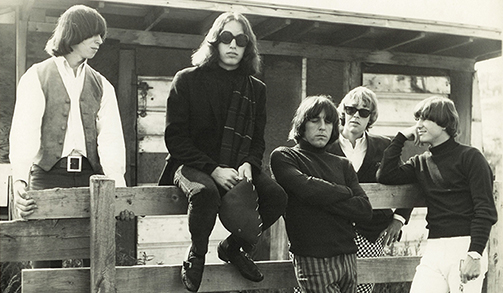
Band Shot - On Location Somewhere


CHAPTER 6: Getting serious
Throughout the fall and winter of 1966, the Other Half rehearsed intensively. Things got serious.
"Randy joins and it immediately changed," remembers Larry. "We started rehearsing every day. No more goofing around, because up until then we were all having fun: we played gigs, we laughed, we got high, we didn't give a shit—just a bunch of guys. But Randy said, 'No, we're gonna get busy.' So we rehearsed four or five days a week and started writing more songs and getting into it more."
"I worked them hard," says Randy. "My wife's mom opened up her home in Altadena, which we rehearsed at every day at full stage volume—which was convenient as all get-out because getting a place to rehearse is difficult. So that really helped. It allowed us to play and write and get tight. And to top it off, she fed the band dinner every evening. She was into it a thousand percent—but of course I was married to her daughter so she was trying to guarantee success for us. I think she spoiled everybody. It was coming together. Everybody was improving and the songs kept getting better. It was becoming a very good band."
"Randy was serious!" remembers Geoff. "As cool a guy as Randy was—and I assume he still is—he was the most serious musician I'd ever been around, because I hadn't worked with that many. He was one of those guys who wouldn't take no for an answer. We'd do our thing. 'Fuck it, let's do it, I don't care what people say.' He was very independent in that way, which was very attractive to me because I liked that, and I needed to look up to someone to follow in the band, because to me all the rest of the band, we'd always been in it for the fun, for the babes, for the drugs—you know, isn't this cool? And Randy came in and said, 'Let's get serious about it. Maybe there's something here that we could make records and get out of the clubs and go up a notch or two.' So he was real important in our band turning into something better than we were."
"Randy Holden, man, he's a powerhouse, there's no doubt about it," says Danny. "He was way, way better than Tom Lennon and much more experienced. He was much more experienced than we were at the time. He had been in Sons of Adam and he had his own thing, his own guitar playing style that he liked. He could stand up right in front of an amplifier and that thing would make all kinds of strange sounds and it seemed like he could control it, like he could bring out the genie or something! He really had a very different approach than most guitar players!"
Randy was single-minded in his approach. As he saw it, there was only one way of doing things: his way. He had the musical vision and the skills and experience to enact it. But he couldn't do it alone; he needed the others to not only follow his lead but to bring something of their own to the table. This each of them did, but it wasn't always easy—especially for Jeff Nowlen.
Prior to Randy's arrival, Jeff had been the dominant member of the band. Not only was he the lead singer, he'd also been the main songwriter. Three of the four songs they'd recorded so far had been his, and though the others made substantial contributions to the music and the arrangements, the lyrics were Jeff's. He carried around a notebook full of ideas for titles and lyrics, and was regularly adding to it. But Randy's arrival caused a huge power shift in the band, and that seemed to throw Jeff off balance. Now all his ideas seemed to be subject to Randy's approval—approval that was not always forthcoming—and this appears to have shaken his confidence. As Randy remembers, Jeff became less animated onstage.
"I didn't particularly think that Jeff was a good singer or a good performer," admits Randy, "except for his animation pulled it off. His animation had a style to it, and though he was just winging it as he went, it had a lot of confidence in it. But then that left rather quickly and that was very disappointing for me, because I thought that was key to what he could have been. But I thought maybe there was a chance he'd come around and he'd pull it out. But he just never did after that."
When I suggest that Randy's presence may have been intimidating for Jeff, Randy is nonplussed: "I didn't have a direct…:" He pauses and considers. "…:but I guess I'd been playing a lot longer than anyone else by then so I think because I knew a lot more about music per se that I was an intimidating factor. I didn't necessarily make it out to be that way, that's just how it was perceived, as far as I can tell."
"I don't remember Jeff toning it down that much," says Westen. "I don't remember him being radically different; I just remember the music being radically different as we became more and more original music and less and less cover tunes." As Westen sees it, as the band eliminated cover material from their set, especially Rolling Stones material, Nowlen dropped his Jagger routine and began to carve out a persona of his own. "Jeff had to find his own way," he says. "He couldn't always be Mick Jaggeresque, he had to become Nowlenesque and that was calmer—because he didn't change anything else, he was basically harmonica, singing, tambourine."
Geoff Westen was the other songwriter in the band. After Randy joined he began to gain confidence as a writer, sometimes working together with Jeff Nowlen. "Randy was already writing original songs," explains Westen, "and that certainly woke me up because I finally evolved into being more of a songwriter than anything else."
As a guitar player, Westen didn't even try to compete with Holden. "I wasn't that good a guitar player, so I had to find my place in the sound of the Other Half, and I found my place in the rhythm section. If you listen to the records, man, I'm just chunkin' along, just playing really rhythm guitar. I didn't play any lines—I couldn't, I was just learning that stuff. Randy overpowered everything, so I just found my home with Woody and Larry and tried to keep that rhythm section as solid as possible so Randy could just have the freedom to blow everybody's mind."
With his beads, sandals and handmade Indian shirts, Geoff was, by his own admission, "one of the all-time great hippies," but his cerebral, somewhat spacey persona sometimes put him at odds with Randy's brusque East Coast working class approach. "Geoff was an odd one," Randy smiles. "He had a creative side that I really liked, but sometimes his ego was just so immense that I couldn't understand him! [laughs] But to each his own. Sometimes you need that to be whatever it is you're trying to be. Geoff got pretty theatric, he was really experimental. But he used to shy away from lifting his own amp and wait for somebody else to do it. Larry made a remark one night, 'What's with this guy? What do you think you're doing? Somebody else is supposed to carry your gear in?'"
Like everybody else in the band, Randy had no issues at all with Larry. "Larry Brown—he was just a sweetheart of a guy," he says. "He was up for anything you wanted to do. He held down the bass line really well. It was solid and right there and you could totally rely on him. He was enjoyable to be around. There was a good nature about him so I always got along with Larry. He was never afraid to lift an amp. He was right into it."
With the exception of Randy, Danny Woody was the most accomplished and experienced musician in the group. From the beginning there was conflict between them. Schooled in jazz, blues and rock & roll, Danny brought a lot of creativity to his playing, but this didn't always jibe well with what Randy wanted from the drums.
"I was standing up and fighting with Randy Holden," says Woody, "because he would write songs but he would also tell you the way to play drums too. I wasn't real happy about that. We had some big arguments about that. I went to school as a drummer, and I wanted to play like Mitch Mitchell and he wanted Charlie Watts."
More accurately, Randy wanted Michael Stuart, who by then was playing with Love. "Randy loved that guy!" exclaims Woody. "Basically that was my competition, Michael Stuart. Michael Stuart was sort of a rudimentary marching drummer in a way. He had those marching chops, and me I'm more of a player's drummer. I'm more into empowering and playing with the band and trying to come up with something like that."
"Danny and I used to fight all the time," confesses Randy. "I would get so upset because he would start rushing and he wasn't conscious of it. He always argued about riffs. I wanted him to play something solid and hard, but he's into real light fills... I'd be like, 'No, no, man. Hit the damn drum. Hard!' He'd be, 'But that's such a cool tasty lick...'"
"I laid that backbeat down strong," insists Woody. "The backbeat was there. But the conflict became the fills, because if you listen to Mitch Mitchell, when Mitch Mitchell came out, it was like, 'There it is, right there.' He's playing with Jimi Hendrix, and listen to that finesse with the backbeat, right? That was what I was doing. I wasn't being a jazz drummer in the Other Half. Forget that. That would never have happened. I laid it down, but it was the fills. I didn't do the Charlie Watts thing; I had more creative fills happening, I guess you would say. But Randy just wanted it really simple. So that's where we ended up with a little trouble. But I laid that backbeat down, I laid it down. And I could play a mean shuffle back in those days from the blues."
"It was everyone against Randy," explains Geoff, "but Randy knew what he was doing, in my opinion, where as much as we griped, he was the leader. He set the direction and we followed him, and it took us to wherever we ended up when we decided it was time to move on. I give Randy all the credit for that. It's nothing to do with whether he was any good or not, but he had the vision."
All the sparks flying in the practice room ultimately translated into more energy to fuel the music, and when the band hit the clubs again in early 1967 they were on fire, playing with a level of intensity and volume that some people weren't ready for.
"Randy was loud, man!" laughs Woody. "I remember they hired us at a club down in Orange County and I think we blew the drinks right off the table! The guy said, 'That's it! You don't need to play no more!' It was a small club and I think Randy came in there with the heavy artillery! [laughs] Boy, when we hit that first chord! It was like shock and awe, man! [laughs] What in the hell is this? My god! We were serious as a heart attack. We were: let's go GET 'EM! I think we were maybe a little over the top there in that area. Like let's go kill 'em!" [laughs]

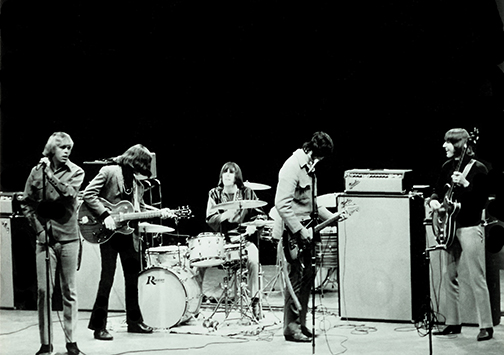
TOH All Cleaned Up and LIVE!!


CHAPTER 7: Flight
"Picture the scene… a car is leisurely driving through Laurel Canyon Drive in Hollywood … in the car is a couple of record producers … sounds from a nearby hillside home reach their ears … at first they think they left their radio on in the car … but a twist of the wrist indicates it is off … 'But where are these great top 40 sounds coming from?" … They follow their ears like radar … the sounds get louder … alas [sic], they find the house … enter … listen … and flip … they reach into their pockets and pull out contracts for the five musician-vocalists, who have lured these producers into their trap …"
So began an early 1967 press release for the Other Half, detailing how the band was discovered by producers Larry Goldberg and Hank Levine. While the events described may sound a little fanciful, that's more or less how it went down. Larry Brown remembers it well, because there'd been an argument earlier that day.
"We were rehearsing at some house in Laurel Canyon and we can't play quiet," he recalls. "We're gonna disturb the peace for the whole valley, you know, with Randy playing. So we're playing and some issue came up, I think between Jeff and Randy, and I put my two cents in and was told 'Shut up!' They didn't say that exactly, but, you know."
Larry unplugged his bass and walked out of the room. "The property had a sloping back and a fence and it kind of came down to a point. Well, I felt like I had done something bad or I'd blown it or whatever, so I walked down to that corner and I'm standing there looking out over the canyon."
A few minutes later Woody joined him. "I don't care what they say about you Brown, I think you're OK."
Larry didn't get the joke right away. "What are they saying? [laughs] In other words, I think they're still in the house talking about how I should've stayed out of it! It went right over my head. Woody was ahead of me.
"So anyway, during that session Hank and Larry were at somebody's house not too far away and they kept hearing us so they drove around until they discovered us. That really is what happened."
Larry Goldberg and Hank Levine were music biz veterans who had first teamed up at Hanna-Barbera Records where they worked with Danny Hutton and Simon Stokes (see UT#46) as well as the Flintstones and Huckleberry Hound. Neither was a producer per se, Goldberg's background was in sales and marketing, while Levine was a freelance arranger with a list of credits stretching back to the late 1950s. They'd recently formed their own production company, No 1 Productions, helping independent producers like Kim Fowley find labels for their masters (they reportedly placed the Belfast Gypsies with Loma, pre-Slade outfit the N' Betweens with Highland, and the Laughing Wind with Tower), while their own productions included the Fire Escape album on GNP-Crescendo and the Crusaders on Tower. By early 1967, they were looking to cash in on the new "psychedelic" craze, a campaign that included the production of A Musical Light Show, a blatant piece of studio-cooked psychsploitation which they credited to the Mesmerizing Eye and placed with Smash Records. To Goldberg and Levine, the Other Half were just another young band of hopefuls, ripe for the picking. That same year they'd sign up several others, including the Neighb'rhood Childr'n from Portland, Oregon, and the Love Exchange from Los Angeles.
The Other Half also found a new management deal around the same time with Jim Pettinotti and Joe Koistra of PaK Artists Management. It's not clear whether this was connected with the production contract they signed with Goldberg and Levine, but Koistra had once been a co-manager of the Association. (Pettinotti and Koistra would later be involved with the group Hunger, who remember Koistra as a shady and intimidating character who wore a gun in a shoulder holster.)
"I don't remember how any of that came about," admits Randy. "I remember somebody showing me a contract about an inch thick and I said, 'You've gotta be joking me! What a bunch of bullshit!' Whatever it was, I could read the Bible faster than I could read that."
Westen was not impressed with Goldberg and Levine either. "To me, those two guys were sleazeballs," remembers Geoff. "I didn't like them. I didn't like what they wanted to do. We just followed the itinerary. Whatever people said to do, we did. We gave up publishing; we gave up stuff that we didn't need to give up. But we didn't know the difference, we just thought that was how it went, that's what you did. Whatever they said we did because we wanted the thing to keep going."
As far as Randy remembers, Goldberg and Levine didn't really understand the band or their music. "They were nice enough guys, but I don't even know why they were even doing it. I knew nothing about them. I think Hank had a goldmine interest. [laughs] He tried to get me to learn how to read music. He really wanted me to do that. So I made a stab at it, but I found it so disinteresting. He wanted us to 'play a classical song.' So we worked up some classical thing and it just was really weird."
Larry remembers the producers throwing some studio session work their way—"Mickey Mouse lightweight stuff, novelty stuff"—including cutting a rock version of Grieg's "In the Hall of the Mountain King," possibly for use in a Hanna-Barbera cartoon. None of the others have any recollection of this.
In January the group made their first trip up to San Francisco. They played at the Avalon Ballroom on January 6th and 7th opening for Quicksilver Messenger Service and the Steve Miller Blues Band. The shows were promoted by Chet Helms who Randy already knew well from previous shows he'd played up there with the Sons of Adam. As the year went on, the band would begin to spend more and more time in the Bay Area.
The following week, though, January 17-22, they played a six-night stint at Bido Lito's in Hollywood. "Bido Lito's was a cool place," remembers Geoff, "a real happening place because it was in the middle of Hollywood, but off the beaten path. It was in a place called Cosmo's Alley between Hollywood and Selma, which is one block south of Hollywood Blvd. There was a little patio when you walked in, and then you'd go into the club and there was a bar, and then you kind of went 'round the corner and there was the dance and stage area. I remember it had a brick wall behind the stage. We played there with Love. The other band we played there with—I don't know how often, maybe a few times—was the Seeds. I wanted to be an Indian, those were the hippy days, and they had a guy in the band that was an Indian guy, or dressed like an Indian [Jan Savage]. I was real impressed with that. [laughs] I think I told you how gullible I was. I was so green. I was just starting out, just going from hanging out at clubs to putting on a guitar and being in a band, so these were all cool things for me.
"Bido Lito's was run by a family, and I remember that the daughter used to be at the gate to let people in. Mom and Dad ran the inside, because I think they had a bar there. I also remember that connected to Bido Lito's in the back was the back of a theater that was on the next street over and it was a strip club—more like a small theater—I think it was a burlesque place. I remember we would sneak into that place through Bido Lito's!" [laughs]
The band's first recording session with their new producers was around February 1967 at Western Recorders, where they cut two of the songs they'd been working on in the previous months: "Wonderful Day," written by Randy, and "Flight of the Dragon Lady," put together by the entire band. The producers then placed the songs with the Acta label, a newly-formed division of Dot Records.
Released in March 1967, "Wonderful Day" was the designated A-side, an ominous waltz-time number with hypnotic jangling guitars building through a series of powerful choruses. Nowlen's vocals are particularly intense on this number, redolent of Arthur Lee at full force.
"The Other Half had its goddamn hypnotic side, man," says Woody, "That song 'Wonderful Day'—when that thing got cooked into gear, I still get goose-bumps when I think about that sucker. Boy, that was a mean-ass song!"
"I liked it," adds Randy. "It was sort of a tragi-comedy. It has this pretty jangly part and then this hard... [section] I thought that song was gonna take off. I thought that one was gonna do it. I thought we were gonna make it with that one because they made a single out of it, and I thought, This is gonna go. But I don't think the record company had any idea. It was such a horrible contract. They had no money invested into it. They just thought they'd slap it against the wall and see what happened."
The flipside, "Flight of the Dragon Lady," is a scorching, Yardbirds-inspired rave-up, based around a muscular descending bass line and featuring some volcanic guitar work from Holden, with Nowlen throwing some tasty harmonica work into the mix. It's one of the highlights of the group's catalog.
"I always loved it, too," says Westen. "That was written by the whole band. A lot of those tunes just get written in a rehearsal or something. You just get in a groove and get going and all of a sudden someone says, 'Now that sounds cool! Maybe we can turn that into a tune.' That's what I remember on 'Flight of the Dragon Lady.' I remember Jeff Nowlen did most of the lyric work. I remember we'd go to his grandmother's house in Beverly Hills and work on tunes. He was the lyric guy."
According to both Holden and Woody, the song was supposed to be played at a slightly slower tempo. "'Flight of the Dragon Lady' was supposed to be a total jazz beat [he sings the intended drum part], which I liked, but at the speed it's going [he demonstrates] it's like woah! Maybe a little slower would've been better, but we weren't slow and easy, we were all fired up, you know. I tried to put some cool licks in there and change it up, but Randy, he don't like that. He wants the drummer to play exactly the same thing every time: 'This is what you've got to play.' And we used to fight about it! We even fought in the studio. It's still the same beat, it's a two bar beat or a one bar, but, 'No, no, you gotta play the same thing.'"
As great as the record sounds, most of the band thought—and still think—that it fell short of capturing the power of their live sound. "Back in those days we recorded at Frank Sinatra's studio," says Woody, referring to Western Recorders where Sinatra cut most of his records for Reprise. "We did 'Flight of the Dragon Lady' and some other songs there, and they didn't know what to do with us. Because we were loud! Because Randy needed to crank that thing up to 10 with that amp—and preferably a couple of them cranked up to 10 would be even better. But they were having a tough time recording us, and they never got it right because I hear it and, nah, that ain't it, man. If they'd have got it right, there'd have been a serious awakening out there because, man, it was like a Tyrannosaurus Rex when this thing came alive! [laughs] That was a powerful band. It was a goddamn powerful band, and live—oh shit!"


LISTEN TO THE OTHER HALF
Here is the infamous Other Half album. Buckle your seat belts.
Click on the player below to get the music going. Then sit back and enjoy!




Geoff and Woody Live!


CHAPTER 8: At the Love In
On March 26, 1967, thousands of hippies, freaks, music lovers, and curious young people of all shapes and sizes swarmed to Elysian Park in LA for an Easter Sunday Love In. Gary Grimshaw's poster for the event promised, ambiguously, "All Los Angeles Rock Groups" (all of them or groups only from LA?) and suggested that attendees bring "bells, flutes, flags, drums, and flowers," as well as "...tangerines, food, incense, candles, and joy."
Los Angeles had been the scene of several free outdoor "love in" or "be in" type concerts in the preceding months, but nothing of this magnitude. The event began at sunrise, and by midday tens of thousands of people had filled the park. Estimates suggest anywhere from 30,000 to 100,000 people were in attendance.
Accounts also vary as to who actually played. Some people swear they saw the Doors, the Jefferson Airplane, the Grateful Dead, and even the Moody Blues perform that day. They did not. Among the bands that did play though were Clear Light, the Peanut Butter Conspiracy, the Daily Flash, the Steve Miller Blues Band, the Rainy Daze, the West Coast Pop Art Experimental Band, and the Other Half.
"That was a big deal!" says Larry. "I think it was 30,000 people. The Vietnam War was going and grass and LSD were coming up mainstream, and I remember there was a lot of paranoia and a lot of undercover cops. But, man, what fun! I look out, and I've never played for an audience bigger than a thousand people or something, and then all of a sudden there's like a sea of them, and they're all rocking! Out of everybody in the band I was probably the least sophisticated at the time, I was just learning; everybody else was ahead of me, so it was like 'Wow! Here I am! Look at this!' It wasn't like an ego trip, it was a thrill. Because if there's anything I wanted to be, it was a famous star. I wanted to be known. What I wanted to do was do it. And there we were doing it!"
"That was incredible!" remembers Geoff. "That was the biggest best thing that I had ever done up to that point. These kinds of events were new for us, because we hadn't moved to San Francisco yet where the outdoor concerts were more prevalent. But, gosh, I remember it was so exciting. It was the thing to do in LA. There were two or three, and I think we played two of them."
One person wasn't feeling the love, though. "It was crazy: people all painted up, on acid, naked, running around going whacko," scowls Randy. "I was angrier than hell because it didn't have anything to do with music; it had everything to do with insanity. I mean, people were really whacked-out. I was like, why are we here? I thought there were maybe 100,000 people there. It was huge!"
"I think there probably had to be 100,000 people there at least," says Woody. "They had bands one after the other and it was like 'get up onstage and adjust what you can because you're on' kind of a thing."
"It was so disorganized and chaotic," says Randy. "I remember there was some band—the Fraternity of Man. He [probably Elliot Ingber] was like [panicked], 'I need an amp! I need an amp! Can I please borrow your amp?' I never but never loan my amp out to anybody. Are you kidding me? That's my livelihood. Ask me for my wife first, but don't ask me for my gear. 'But this is peace and love, man. We just need it for a while. I promise I won't hurt it!' And I caved in, and I should not have. He was a jerk! He abused it and I was really pissed off. I might have decked him if I'd have seen him. They were crappy too!" [laughs]
During this same period the Other Half also played regularly at the Cheetah Club, located on the pier in Pacific Ocean Park. Things To Come (UT#43-44) were also on the bill. On May 19, they played another big show, opening for the Peanut Butter Conspiracy and Iron Butterfly at the Valley Music Theater out in Woodland Hills. "That was a biggie," remember Geoff. "That was really like the first gig we did out of town, if you could call that out of town, and that was the first gig that warranted a limo. This was big time for me."
"That was so embarrassing to me," says Randy. "Somebody had the idea that we'd rent a limousine and we'd pull up in a limousine like the big rock stars. I was like, 'Oh god! We're not really, are we?' And they did it, and I thought, This is going to be so humiliating. And it was."
"It was not just any limo," adds Larry. "It was a guy called Fabulous Howard. He had extra stuff in his limo, and Fabulous Howard would always put on a show for you. So we met at the office and we all got in the limo and went out to the valley. This theater's in a huge parking lot slightly sloped for drainage; it's like an eighth of a mile up. The idea was, when we pull into this parking lot he's gonna turn on the siren and the whole crowd is gonna turn and look as we jet up to the back entrance or whatever. So we turn into the driveway and he flips on the siren and whatever lights he had going, and we race up. And we get up there—there's nobody there! [laughs] See, because of the traffic, we're an hour late or something and the crowd's already inside. So it was like, we could've had your mom drop us off!" [laughs]
"When the limousine pulled in, he had one of those horns going," remembers Randy. "I was like, 'Seriously?!' [laughs] I don't even want to get out of this thing. I was getting out of the limo and some guy said, 'Who do these guys think they are? Big rock stars?' I was like, 'There you go! That's just what I was afraid of!' [laughs] It was just a disaster. It was ridiculous."
On May 28 they played another Love-In, this time in Griffith Park close to the merry-go-round—a familiar location for Geoff Westen, who'd grown up in the neighborhood. The following week, on June 6, they were back at Western Recorders where they laid down five songs: "I Need You," "No Doubt About It," "Morning Fire," "Fly Away" and "I Love You." "I Need You" and "No Doubt It" were issued as the band's second Acta single in July. The rocking A-side, written by Randy and Mike Port, was a holdover from the Sons of Adam days, while the flipside, a Jeff Nowlen composition, was a souped-up Yardbirds-type blues wailer. "I Need You" and "Morning Fire" would both appear on the band's album the following year, but the excellent "Fly Away" and "I Love You" remain unreleased at the time of writing.
[FOOTNOTE: "I Need You" was covered in 1968 by an East Coast group called the Epitome and released as a single on Mona-Lee Records. It's a completely different arrangement of the song, slow and dreamy with sweet backing harmonies and a nice fuzz guitar break. The Epitome also had a second single on Kama-Sutra.]
The summer of 1967 found the Other Half making another trek up to San Francisco. They played at the Avalon Ballroom on July 13-16, this time opening for the Charlatans and the Youngbloods (the Wildflower replaced the Youngbloods on the last night). Randy's assessment of the Charlatans: "They were a bunch of stoners."
The spacious ballrooms of San Francisco were much different acoustically to the clubs the band was used to playing in the Los Angeles area, and, as Randy remembers, the sound systems were also superior. "The Fillmore and the Avalon were awesome venues to play," he says. "They held a couple of thousand people. They were these old wooden ballrooms. This was their third life because they started in the Speakeasy days, and then they went out, and they came back in with World War II big bands, and then that went out, and they came back in with the rock bands. Chet was largely responsible for that because he leased the Fillmore from Bill Graham, who was a New York hustler who was trying to figure out how to make some money. He used the Sons of Adam to break the lease with Chet, to throw Chet out. He saw the money that Chet was raking in, and so he came up with some scheme. He came screaming in the dressing room, 'Your wives are in the dressing room, you broke the contract! Chet's out of here! I'm closing it down!' We're like, 'What are you talking about?' 'I smell marijuana! You guys are smoking pot!' None of us smoked anything in those days." [laughs]
Graham's over-the-top rant was all an act designed to be overheard so that he could claim that Helms had violated the terms of his lease. "He came up with all this," laughs Randy. "He was a nut. Anyway, he shut Chet out."
As Randy explains, Helms' philosophy was the polar opposite of Graham's; one was a hippy and a music lover, the other was a businessman. "Chet loved the music. The money was secondary to him. And he was doing well. He always filled the place up, and he always treated you well."
According to Randy's recollection, it was at this first run of Avalon shows that he debuted what would become one of the centerpieces of the Other Half's set, an extended solo guitar improvisation during which the rest of the band left the stage, after first plugging all the amplifiers together to allow Randy maximum volume, power and sustain. "We had those Fender Dual Showmans and they've got two input jacks," explains Larry, "so if you run one to another to another, one's high, one's low impedance, and when you plug both in they're both low impedance. So we strung them all together and he did his psychedelic thing or whatever you wanna call it."
This solo section was originally part of an expanded version of "I've Come So Far," but would ultimately spin off a newer song, "What Can I Do For You." "I started to do that pretty early on," remembers Randy, "the first gig that we had at the Avalon Ballroom. I'm not sure what got into me. I just said, 'Hey, I'm gonna do a solo. I'm going to plug all the amps in and you just take off.' And they were all into it. Larry went around and plugged everything together for me.
"I just loved that," he continues. "That was nuts! It was so much fun, and the audience loved it. That tripped me out that they really went for it so much. I was winging it. Most of the time I didn't have a clue what I was gonna do. I just did whatever popped into my thoughts. But I started pulling together a concept for it, and it was working, and it got better and better and better so that the guitar filled up every spot, place, and created even a rhythm and did everything to make it work. I figured out how to do it, as opposed to when I first started doing it when I was really a bit psycho!"
"Randy was like a hero in that respect, as far as amp manipulation," says Westen. "As far as I know, no one else did what he did."
The hippies up in San Francisco tended to regarded bands from Los Angeles with suspicion. As they saw it, LA was Tinseltown—full of Hollywood phonies in plastic love beads. But evidently the Other Half passed some kind of litmus test at the Avalon. From that point on they were welcomed to the city with open arms. Randy remembers Chet Helms running up to him after got offstage and giving him a huge hug. "This guy!" Helms gushed. "I used to know him when he was just a young kid from Baltimore!"
However, the July shows at the Avalon would be Danny Woody's last with the Other Half. "Eventually I had to fire Danny," remembers Randy. "I'd been thinking about it a long time. I told him over and over…:"
"They just said, 'You're out,'" remembers Danny. "'Your last show is at the Avalon Ballroom and that's it.' I remember that I had traded in my Ludwig drum set, my first drum set, and it had a 20-inch bass drum—I'm playing loud music with a 20-inch bass drum and a 12-inch tom! These drums need to be bigger! They bought me this white Rogers drum set that I wanted and I traded in my drum set also to help them, and when I left they just took the drums too. It hurt, man. It hurt me. I have to say I loved that band and I was dedicated to that band and I worked hard on that band to have a unique drum sound. It had plenty of bang-bang-bang. It wasn't no jazz drummer in a hard rock band. That it wasn't. But I felt it had taste. We were a four-piece band. The drums were a big part of those early bands. Even look at the Turtles. They had that Johnny Barbata playing with him. He was a fancy ass drummer playing pop music, but his little fills, you listen to them—they're real nice. And that's what I wanted to do. I wanted to lay it down, but when it came to the fills, let me do something that's apart from just the regular yokel guy. I fought about that. That's what happened. And so the other guys were right in the middle of it. Randy, he's the most powerful guy in the band really. Those songs are his, he's more experienced than everybody, so who's gonna win?"
"I was OK with it, to be honest with you," says Westen. "I thought Danny was too good for our band. I knew his friends were way technically better than we were—the people he used to be with. Woody was a great guy. I loved Woody! I remember when he laughed his head would kind of bobble back and forth. He didn't get fired because he wasn't a cool guy, I'm sure it had only to do with how he fitted into our sound. Woody wasn't a pounder. He didn't pound the kit, he played the kit."
"Like I said, he was a jazz kinda guy," adds Larry, "and Randy wanted him to play like Paul Whaley [of Blue Cheer]. Like turn the sticks around, get small baseball bats and make piles of sawdust. Danny, I think he got to the point where he was all 'I don't want to do this.' He wasn't so much into that, whereas the new guy we got at the time, he was totally into hard playing."
"In my life that was the saddest moment, I have to tell you," confesses Danny. "Because that band meant a lot to me. That sound, that thing that we had, I believed in it. I did, and I think everybody believed in it."
After the Other Half, Woody played with the folk-rock group Heart & Flowers at venues like the Troubadour and the Ice House. He was also based in San Francisco for many years. "Tim Davis, the drummer for the Steve Miller Band, he was my student and my dearest friend. We were living in Sausalito with Nicky Hopkins." Woody played bongos and Davis congas on the title track of Jefferson Airplane's Crown of Creation album. He later played Las Vegas with Louis Prima and Johnny Tillotson, and Reno and Lake Tahoe with Fats Domino. Woody also worked with CK Strong (along with Geoff Westen), One Man's Family, featuring ex-members of Spanky & Our Gang, and briefly with Seals & Croft. More on him later.


Jeff and Larry Live!


CHAPTER 9: 2Bs or not to be
Ron Saurman was born in New York City, but grew up in East Grand Rapids, Michigan. By the mid-sixties he was active in the area's music scene playing drums for the Jayhawkers, a band led by Jay Walker, later a DJ on WKNX and WGRD. The Jayhawkers made several singles, including "Dawn of Instruction" (an 'answer' song to "Eve of Destruction") on Deltron, and "Come On (Children)" on Lucky Eleven, which was a local hit in late 1966.
"We were managed by a company called Lucky Eleven," says Ron, "which managed Terry Knight & the Pack, which became Grand Funk Railroad, and Question Mark & the Mysterians who were all friends from back in those days. We did really well. I think we did three or four singles. We used to back up people like Freddie Cannon when they would come through that area of Michigan, Sonny & Cher. We were on the bill with the Yardbirds with Jeff Beck, and we were the backup band though Michigan for Simon & Garfunkel when their first 'Sounds of Silence' release came out. So we did pretty well back there."
The Jayhawkers also played out as Jay Walker & the Pedestrians before splitting up in 1967. (Walker eventually changed his name to Sonny Fox, and is now a DJ on a Sirius XM comedy channel.) After the band split up, Ron Saurman headed out to San Francisco, and it was there, at the Avalon Ballroom in July, that he ran into the Other Half.
As Saurman recalls, he was recruited pretty rapidly. "I saw them at the Avalon and they were losing their drummer so I decided I'd try out for them. So I tried out for them, I think it was Sunday [the last night of their four-night run], and they said, 'You're coming with us.' So I joined them on Sunday and went back to LA with them."
Down in LA, Saurman moved in with Larry Brown and started rehearsing with the group right away. Ron thinks his first show with the Other Half may have been at the Cheetah Club. [Randy also remembers Randy Carlisle from the Sons of Adam trying out for the Other Half, but Geoff and Larry have no recollection of this.]
Ron Saurman was integrated into the group fairly quickly, and soon realized that playing loud and hard was the key. "I was playing with 2Bs, that was the size of the sticks, and they weren't big enough! But I couldn't find anything bigger. Keeping up with them was not real easy."
As he remembers, it was Randy who called most of the shots. "His lead playing kind of drove the direction of the band. So instead of playing drums with the bass, I'd more or less play drums with Randy. So I would accent with him, but I'd keep the bottom end going with Larry. Geoff Westen was the rhythm. He was kind of like the 'cool' one. He was sort of like George Harrison; that was his persona. Jeff Nowlen sang and played the harp. He was the personality of the band. He was a fairly decent harp player, and he was a funny guy. I liked Jeff."
Jeff Nowlen and Geoff Westen were coming up with a lot of the song ideas, but, as Ron recalls, the arrangements were always down to Randy. "Nowlen would be doing the lyrics, Westen would be playing the rhythm parts, putting the thing together, but Randy drove the song where it was going, where it would head, how long the lead parts were, where the bridges came in and the verses. So whatever the song started out as, it would end up pretty much with Randy's signature on it."
It was during this period that Randy began learning to play the sitar. He'd already experimented with a droning sitar-like effect on the song "Morning Fire" (recorded with Woody back in May), but became more interested in the instrument after meeting a couple of Indian musicians in San Francisco, Luxman and Purna Das, the Bauls of Bengal, who'd come over to the States at the behest of Dylan's manager, Albert Grossman. (The two brothers are pictured on the cover of Dylan's John Wesley Harding album.) Randy tried out some of their instruments: "One of them you played with a big pick made out of a piece of bone," he remembers. Finding that he could get some pretty good sounds out of it, he decided to purchase a sitar and learn how to play it. His interest earned him some coverage in the Los Angeles Times on September 10, 1967, in a piece about the growing popularity of the instrument among LA musicians. "Bandleader Holden, a guitarist for eight years who hopes to use the instrument on stage and on records with his group, describes its music as 'kind of a thoughtful thing, kind of meditative,'" the article reported. Ultimately, though, this musical experiment never took flight. "I wasn't bad on it for a while," remembers Randy, "but musically I couldn't get inspired to even think of playing anything."
Randy's flirtation with the sitar did leave us with an amusing anecdote though. "Robby Krieger heard that I'd got a sitar so he wanted to come over to my house because he'd just got one, and try to jam and see if he could learn anything or whatever. He was kind of a spacey guy who was not altogether there. He was just kind of quiet and slow moving. [laughs] Stoned, I guess, but I didn't understand that then. So he came over and he had this brand new really fancy sitar with gourds on both ends, really beautiful. And I had this funky old hundred dollar piece of clunk junk. [laughs] So it wasn't much of a session. But I remember when he left, he forgot his shoes. [laughs] So he left barefoot. He was someplace else."


Randy and Ron Live!


CHAPTER 10: Orange Sunshine
Starting in the second half of 1967 the Other Half spent more time playing in San Francisco than in their home town of Los Angeles, although some of the band stopped short of actually moving there permanently.
"As it turned out we passed on LA," explains Geoff, "and eventually we all figured out how to live in San Francisco and we just worked out of the Bay Area. We cut our album there; we worked the halls, the clubs. I could walk down Haight Street and people would know me: 'Hey, your show was great last night!' That blew me away! I was still in awe of the whole process. I think we always had a full crowd at our shows and most of the time we were either first or second up on the billing."
"In those days a working man who could make 50 bucks a day was doing good," Larry recalls, "and we're getting a hundred bucks a night apiece for playing music. So like wow! If I work all week I get 500, if I work two nights I get 200, so it was really good. Randy and Chet Helms worked out a deal, and it got to the point where if he had a cancellation or anything like that he would call us. So you'd get a gig and you'd go up there and while you're up there he'd say, 'I've got another for you two weeks from now.' I can't afford to fly home and come back so we had friends and we'd crash on somebody's floor for two weeks until the next gig, and in the meantime we got to go across town to the Fillmore and see all the people we couldn't see because we're working."
"I was living right in the Haight," remember Geoff. "I came from an artsy background from school days and I had a couple of friends that just lived in Haight before Haight became the spot for all the hippies, and they lived on Frederick Street just a couple of blocks above Haight Street." It was a typical Haight-Ashbury crash pad during a period where young people were flocking to the city by the thousands to be a part of the emerging counterculture. "I remember coming home from the gig and walking down the hallway to my room with my friends and there'd be people just sleeping in the hallway," chuckles Geoff. "I thought that was so cool!"
Randy preferred to employ a hit and run approach, more often than not returning home to LA after shows to be with his wife. "When I first went to San Francisco, the place was really depressing to me because they had all these row houses," he remembers. "Baltimore had row houses and poverty, and I couldn't wait to get out of there, I was so depressed there. So when I went to San Francisco, I went, 'Oh no! Not here, too!' [laughs] It didn't appeal to me at all. I just loved playing music there. I had a fast car so I'd drive up, get onstage and play, throw my amp in the back and drive home. Five hours flat. I had a GTO. It was fast."
Posters document some but not all of the Other Half's shows during this period: in August they played at the Avalon Ballroom with Quicksilver Messenger Service and Melvin Q Watchpocket. In September they were back at the Avalon, this time with Mad River and the Youngbloods; then at the Western Front with Freedom Highway, Peace, and the New Delhi River Band; and a few days later at the Matrix with Frumious Bandersnatch; then in October at the Western Front again, this time with Blue Cheer and the Wildflower.
"I look back at the guys I got to play on the bill with," says Larry. "Albert King, Freddie King, Clifton Chenier, all the San Francisco bands, Quicksilver, Mad River, Youngbloods—Jesse Colin Young lived out there in Marin. To me that was so exciting to play with those guys and talk to them. You'd talk to Albert King and he's happy, he's got the gig and oh man. And then you talk to his band, and they all hated Albert because 'fucking cheapskate motherfucker!' So you got to see a lot of that kind of stuff."
"I wouldn't go to the Avalon just because we were working, I would go there all the time because I wanted to see other bands and stuff," remembers Geoff. "I remember one night they were closing down the place and I went into the dressing room and Janis Joplin's in there sitting by herself. And I sat in there with her for over an hour just jamming with her. I'll always remember that, because people like her were unreachable, untouchable, and there she was just being a normal person. I always remember Avalon Ballroom for a couple of things like that, more than our gigs. I don't remember our gigs, I just know that we pounded our way through an hour and that was it."
"In San Francisco we used to play with Steve Miller a lot," remembers Randy, "and I used to sit in with his band almost every time they went up. I had guitar duels with Steve Miller. That was a lot of fun. I got along with most everybody up there, except I didn't care for the Moby Grape guys, they were kind of bizarre. LA-like. Artificial, if you will."
"I just remember how cool it was and how cool most of the musicians were," says Larry. "The Airplane were all like college guys—you know, sophisticated and aloof, but at the same time when you talked to them, very friendly and open. Jack Casady let me stay at his house one weekend. He was someplace else and through somebody we arranged to stay at his house. I remember he had such cool stuff! He used to wear those dark blue glasses that were about that thick and he had a bunch of them laying there. I didn't touch anything in his house except his glasses, I left his stuff alone, but he had 'em out and I put 'em on and it's like you can't see two feet! So I don't know what Jack could see... [laughs] Maybe that's what he wanted. And I remember he had a biplane, about this big, in a birdcage—like Jefferson Airplane. Anyway, that was the beginning of getting turned on, playing with guys like that.
As Larry remembers, the San Francisco bands were more down to earth and welcoming than some of the LA bands he'd crossed paths with. "The Doors were totally aloof. They weren't like, 'Hey, come in. Wanna get high? Let's hang out.' The Dead, the Airplane, and Quicksilver, all those guys, they were more open, they didn't give a shit, like, 'Come on in!' You know? Woody had already turned me on to all of that, like, 'We're not competing with those guys.' Because I didn't know what to do in any situation.
"When I ran into those guys in San Francisco and we began to share the billing, I found out who's cool and who isn't, and most of them were really cool. I remember listening to Charles Lloyd, the flautist. His music was so fine! And we're up there like pounding and slamming and whatever, and when I got a chance to talk to him I said, 'You know, you guys you're so sophisticated, so advanced, I feel like I oughta just throw my shit away.' And I remember he stopped me and put his hand on my shoulder and it was like having a saint touch you, and he said, 'Son, you do really good just the way you are.' Charles Lloyd said that to me! Those days for me were really magic because I began to understand and start getting it when I would get encouragement from guys like that."
"One of our most famous fans in San Francisco was a guy named Owsley," recalls Geoff, referring to Augustus Stanley Owsley III, the famed LSD chemist. "They used to call him the Bear, and he was famous for Owsley acid. He used to love us! He used to come and pass out his wares to anybody that was around. The Avalon Ballroom was like a stage and then a huge dance floor and everybody was just freak-out dancing back in the day and I remember him out there. I said we'd built a following—well, we'd certainly built one with him coming to our shows and giving all of our fans drugs. Maybe that's why they liked us! [laughs] The one time I tried to play on acid was a dose of his LSD at the Avalon. I broke every string on my guitar! Nobody could figure out 'what's going on with Westen? He's acting so weird!' [laughs] All I remember is Owsley slipped me... they used to be on a sugar cube or something... and he slipped me one and he said, 'Here, take this, you'll rock the next show!' I certainly did, I almost destroyed my guitar and everything that went with it. [laughs] So I certainly remember that. That was a highlight."
"I don't remember that," admits Randy, who was becoming increasingly exasperated by the drug use among the other band members. "I just remember that I was walking from the dressing room one time and I didn't know who Owsley was, and he came up to me and he said, 'Hold out your hand.' And I put my hand out and he said, 'No, both of them. Put them together.' He said, 'There you go!' And he had this leather sack and he just pours Orange Sunshine, a big heap of it, into my hands. It was falling all over the floor. He said, 'Have a great time!' [laughs] I'm standing there holding this double handful, and Larry comes up and he says, 'Do you know who that was? Look what he gave you! Man, that's Orange Sunshine!' I said, 'Hey, do you want it? I don't want this shit.' He said, 'Yeah, man!' And so I gave it to him." [laughs]
"Owsley would come through and he would hand out handfuls, literally, of LSD," confirms Ron. "Handfuls! [laughs] I remember one time we played at the Western Front, and my band guy who would set my drums up was walking me around the block out front until it was time to play. And then he walked me around to the door, and right in the door and right up to the stage and on the stage, and we started. I was wearing a leather coat with fringe that had wooden balls at the bottom of the fringe, and one of the things that I remember really clearly—more so than anything else about that night—was my left and right arm locking together with the fringe and the balls getting tangled, and trying to pretend like everything was fine, keep on playing through this song. And I started laughing, I couldn't help it, I was cracking up. So at the end of the song everyone looks around at me and I'm pulling my arms apart going, 'Did it sound OK?' They go 'Yeah. We couldn't tell!' [laughs]
Randy could tell. "When we auditioned Ron, he was really good. I told him privately, 'Don't come onstage stoned-out.' Later we had a show and he was all over the fuckin' place. I mean, his timing was off, he wasn't remembering parts, everything. Afterwards I said, 'What the hell's wrong with you, man?' He said, 'I thought I played great!' I said, 'You played like shit, man.' He said, 'I thought I was... [pauses] Well, I took some acid...'" [laughs]
"He didn't really like that too much," Ron laughs, "but those were the days! Randy was kind of unable to get high and remain a part of what was going on in the music. So that kind of disjointed things a little bit. But the rest of us didn't get high too much when we played, except for the occasional LSD tab when Owsley would stop by when we were playing the Avalon. It was kind of hard to say no to him!"
Owsley and his wares would provide the inspiration for a new song, "Oz Lee Eaves Drops."
Even without drugs, Randy was perfectly capable of getting 'out there' onstage. "I'd do things like jump up in the air and land on my knees. Oh man! You have no idea how much pain that was! It was not a good idea at all. People loved it. People love a sacrifice! [laughs] And then I started running off the end of the stage and jumping into the audience and climbing up and doing that for a while. We did one gig somewhere in Northern California, a pretty good-sized gig, and just when I ran off the end of the stage the lights went out. I had no idea where the floor was, and when I hit the floor I landed on my heel and fractured my heel. I was in so much pain! I couldn't climb back onto the stage. It wasn't working anymore. I really messed it up and I was limping for about a month after that." [laughs]
The Family Dog had spawned a spinoff franchise in Denver, Colorado, and in November the Other Half flew out to play several shows there with the Jefferson Airplane and the Sons of Champlin. "It was Jefferson Airplane, the Other Half and Sons of Champlin on opening night," remembers Saurman, "and then we headlined the middle night, so it was the Other Half and the Sons of Champlin, and then on Sunday it was Airplane again and us and Sons of Champlin."
"I remember it really sucked!" says Randy. "I hated my guitar. I had this Jazzmaster and it had no sustain at all. When I first became infatuated with the idea of having a Jazzmaster, I thought the neck was longer, and because I had large hands I thought I could move on it better. That wasn't true at all. That was just some stupid idea I had in my head. I really hated the tone of it. I could barely stand playing it, but I didn't have any money to get another thing. And I didn't really like my amps. These Dual Showman cabinets I had, the bottoms were bigger, not the standard Dual Showman, and they just didn't sound right at all. The smaller cabinet of the Dual Showman, it just had punch and kicked ass, but these things were kind of floppy and I hated them too, and I had a pair of them. Jefferson Airplane played the gig too and Jorma had four Fender Twins and they were way louder than my two Dual Showmans, and that really pissed me off! [laughs] I was just angry and depressed. Nothing was going my way at all."
Geoff Westen remembers having his own misgivings about the Denver shows. Seeing the Airplane loud and up close, dominating their audience, at the very height of their powers, he had an epiphany of sorts: "Man, we're not that good."

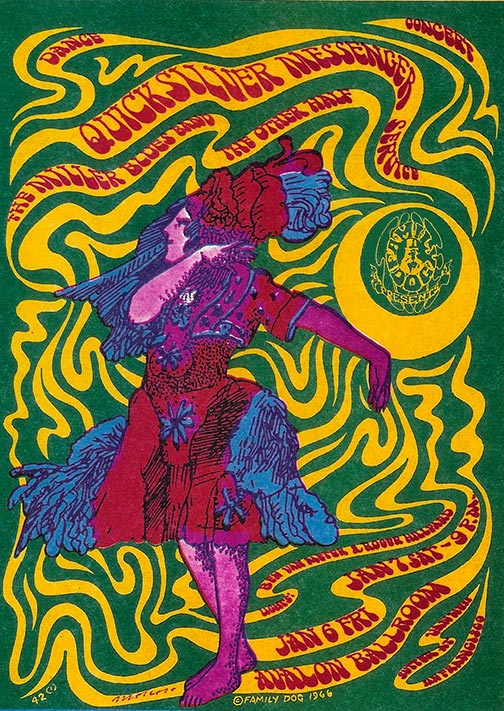
The First TOH Avalon Show


CHAPTER 11: Golden State
Golden State Recorders, located on Harrison Street in San Francisco's warehouse district, was opened by Leo De Gar Kulka in 1965. With its large studio room, custom solid state console and Ampex four-track recorders, it was a popular destination for many of the city's rock musicians. The Beau Brummels, the Mojo Men, the Great Society, the Syndicate of Sound, and the early Grateful Dead had recorded there, and later in the decade the studio would host album sessions by Quicksilver Messenger Service, Mad River, Big Brother & the Holding Company, and the Sons of Champlin, to name a few.
In the fall of 1967, Larry Goldberg brought the Other Half there to begin work on their debut album. Goldberg already had a business arrangement with the studio, as Leo Kulka explained to Alec Palao in a 1994 interview: "When I found somebody he thought was good, Larry would come up [from LA]. We had an agreement that he would peddle [masters], and I would give him three quarters of the front [advance]. So he would make the deals in LA and he was a pretty good salesman. But Larry was only interested in the fast buck. If we could make a dollar now, that was worth more than five thousand dollars five years from now. So when I got a two or three grand front, he took two, I took one, the label took the group, and that was it. It didn't pay for the cost of the tape half the time. A lot of these record companies knew Larry, so it was like a handout, a tip. But because the label didn't have any money into the product, they didn't push it, didn't try. That did me, and the groups, a big disservice, and very few records of mine made what they should have."
This is evidently what happened with the Other Half and Acta Records. Having primed the pump with a couple of singles, Goldberg cashed in for a full album deal and split the advance with Kulka. Half a dozen tracks had already been tracked in LA, all that was needed was five or six more, and the album would be in the can without too much hassle or expense. What happened after that as far as promotion or distribution wasn't of particular concern.
Most of the album was tracked over the course of four sessions in October with some additional overdubs and mixing completed in November. According to session notes, either five or six songs were recorded: "Introduction," "Feathered Fish," "Oz Lee Eaves Drops," "Bad Day," "What Can I Do For You," and "Love You Baby." However, it's possible that "Love You Baby," which did not appear on the album, was the original title for "Introduction," so those two songs may be one and the same.
From the start, the sessions were fraught with difficulties and conflict between the band and the engineer. No one remembers Goldberg being present for the sessions, and Levine appears to have only been involved in the earlier LA sessions.
"That was a nightmare place for me," says Randy of Golden State. "Everything that was done was wrong, from end to end."
"I remember it was a struggle," agrees Geoff. "It was one of those deals where Randy said, 'Fuck 'em! We're gonna do it how we do it because that's us!' But they weren't buying it."
Larry agrees: "We go in the studio and we all have definite ideas. Our own ideas. Randy knew what he wanted. We all knew what we wanted. We knew what we were doing. Then Leo De Gar Kulka says, 'OK, bass player? We're going to put you through the board.' I go, 'No!' 'Yeah, yeah, trust me. It's gonna come out good.' Well, in previous experience when they wanted to do that they would run a splitter, then have half of it through the board for clarity and the rest [through the amp] for tone, blend it. 'No, no, plug into the board.' I could hear my own amp in the studio, but I couldn't hear what they were doing [in the control room]. Anyway, the sound that they came up with, what you hear on the album, is real thin. You can hear the notes. But I had a great tone then, I got good tone now. But when I heard that album…"
"I feel like they messed around with our stuff a lot when we weren't around," adds Geoff. "It just didn't sound right, and none of us were real happy with it."
"The initial mixdown sounded fairly good in their control room," remembers Ron, "but not so good in my opinion on a normal everyday system."
More conflict followed when the group presented their concept for the album cover. "That was a big issue for us," says Geoff. The idea was for half the band to be dressed in women's clothes and the other half in their regular attire—a play on their name. The Other Half of the Other Half was floated as a possible title. According to Westen the inspiration came from the Rolling Stones, who'd been photographed dressed in drag for the cover of their "Have You Seen You Mother, Baby" single. "We saw that, and we said, 'That looks like a good idea for the Other Half. Maybe we can create a thing out of that where one half of us is normal rock & roll guys and the other half is us in drag.'"
Randy continues the story: "We did this photo shoot for the album cover and the record company refused to use it. They said it was immoral and broke the morality clause of the contract. [laughs] We dressed in drag and we dressed normal, and then just combined them so one shot was three of us in drag and two of us straight, and the other shot was three straight and two in drag: The Other Half. It was hilarious at the time, and didn't have anything to do with being gay or transvestite, none of that. It was just very funny. You wouldn't believe how ugly these guys were!" [laughs]
"We thought, This is cool, this is different," continues Geoff. "Well, the label went berserk. They hated it, and this is why we have the hand-drawn cover that we ended up with."
The controversy over the proposed cover art may have been why the album's release was delayed until the beginning of the following year. It was released in February 1968, concurrent with a new single, "What Can I Do For You" / "Bad Day."
Larry Brown remembers being stunned when he saw the album for the first time. "It was like when Spinal Tap got the Black Album!" he jokes. "'None more black!'" [laughs] Instead of a photo of the band on the front cover, their faces were combined in a colorful psychedelic line drawing, similar in style to Love's Forever Changes. "We got the album," continues Larry, "and, 'What the fuck is this?! 'We had some renderings done.' I forget which manager or producer told us that. 'Oh, we had some renderings done.' What the fuck is a rendering?! [laughs] 'What do you mean a rendering? What's a rendering?' 'Oh, it's a drawing, you know.' 'Ah, OK.' Well, this is what we got."
And then there was the back cover. "So I'm turning it over," Brown continues, "and there is not one mention of anybody in the band! Nothing. My name appears on the label on one of the songs that listed all five of us 'cause we made the song up, and there I am [he indicates tiny type on the label]. But on the back, Leo Gar De Kulka [sic] and Joey Bloey [sic]—the guy who brought, I'll never forget this, 'cookies, cokes and soothing words.' Number 1, he did bring me a coke, I never saw any cookies, and I didn't need any soothing words! [laughs] But he gets credit, the janitor gets credit, the go-fer gets credit—everyone except the people who made the music!"
"Everything about the whole business aspect of the band was upside down, backwards and wrong," states Randy. "It couldn't have been any worse. It was all futile and worthless. And when I heard the album after it was done it was like so bad. Everything was sped up so fast. I was like, 'What the hell is this?' It sounded horrible. It sounded flat and dead and dry. It did not sound like the band at all. It did not represent the band. It actually really depressed me."
As negatively as the band views the album, it's held in high regard by fans of '60s garage and psychedelia—myself included. No doubt it fell short of capturing the energy and sonic power of the band's concerts. No doubt some of the mixes were less than perfect. But for those of us who never saw the Other Half perform live and don't have that experience to measure it against, it's an extremely satisfying piece of work—one I'd rank among my personal favorites.
Admittedly, it starts off on the wrong foot: "Introduction" is a rather humdrum early Stones-style workout with a loose, jokey vocal track by Nowlen and Westen—both high as kites—and some contrived overdubbed applause. "I think we just patched that together in San Francisco," remembers Geoff. "It was just something that we made up on the spot. We just took it as it was. Jeff would say funny things in the mic and we'd all laugh and think it was such a good joke and just left it on!"
Things pick up as the track segues into "Feathered Fish," a song Arthur Lee had gifted to the Sons of Adam. "We were rehearsing at a house up in Laurel Canyon," remembers Randy, "and Arthur came by one day and said, 'Hey, man. I've got a song for you guys,' and played it for us. He played it as he would in Love, but that's not how I would play it." Although the Sons of Adam would record and release a version of the song in 1967, after Randy left, he remembers them cutting a much better version while he was still in the band. "The Sons of Adam did a recording of that that was pretty damn good," he says, "but it got lost." It was this arrangement that Randy brought into the Other Half's live repertoire, and which they subsequently recorded for the album. "Other Half didn't do it as well as Sons of Adam," admits Randy, who blames it on the studio. "The feel just wasn't right. The guitars sounded so horrible in that place!" (Inexplicably, on the label Country Joe is credited as the songwriter, one of several discrepancies according to Randy: "I wasn't happy with how the writers' credits turned out either, because I did writing in there that I didn't get credit for so that kind of pissed me off.")
The next three tracks on the album—"Flight of the Dragon Lady," "Wonderful Day" and "I Need You"—date from earlier sessions at Western Recorders with Danny Woody on drums, as does one of the Side 2 highlights, "Morning Fire," an Eastern-flavored number with a chiming raga-like guitar line. When pressed, Randy gives his grudging approval to some of these tracks. "There were a few songs I liked. I liked 'Flight of the Dragon Lady,' it was a pretty strong piece. I liked 'Wonderful Day,' and I liked 'Morning Fire,' this chimey thing, I used to tune the high E down to the B so they were both the same pitch and played the riff like that. Detuned it just slightly so it had a nice sense about it."
Of the half-dozen tracks cut at Golden State Recorders with Ron Saurman on drums, the strongest is undoubtedly "Oz Lee Eaves Drops," a tough, fast-moving psychedelic number with a killer bass line, scorching fuzz guitar and a thrilling breakdown with Nowlen blowing some Keith Relf-style harp over Saurman's powerful locomotive drum pattern. "I thought something almost backwards would work there," says Ron. "I always enjoyed playing that one; that was fun."
Saurman can also be heard on the "Bad Day," a straight-ahead rocker, and the album's almost ten-minute closing piece, "What Can I Do For You," the last seven minutes (or "Other Half" as it was designated on the tracklisting) being a wild guitar freakout by Randy. "We certainly didn't hold Randy back!" laughs Westen. "Go for it, man! All that screeching and feedback—he was the master of that! He could control his amp facing his amp; that's how he could make it all happen. It was really interesting." In a concert setting, these extended improvisations invariably brought the house down, but at Golden State Recorders only a fraction of the excitement and innovation of Holden's playing was captured on tape.
While the Other Half album may not be entirely consistent, it is, nevertheless, an excellent record—despite what any of the band members might tell you. It's a similar situation to certain other records that are held in high esteem by fans but disparaged by the artists who made them: Loaded by the Velvet Underground, Raw Power by Iggy & the Stooges, and LAMF by the Heartbreakers—all supposedly "ruined" by poor production choice, all, at the end of the day, great just the way they are.
Over time, most of the band members have grown to accept the album for what it is. "At least there's some evidence that I was here," says Larry. "I like that. At least I showed up. I was bitter for a long time—I say bitter, but mildly—about how we were treated and what they did with it. They blew us off, like 'Ah, they'll be pumping gas next week anyway. It doesn't matter what we do.' But for us it was important, and we had definite ideas. So I'm grateful to have the record, but I haven't played it too much."
While Acta did little to promote the album, reviews in the trade papers were generally positive. "Swinging rock is the Other Half's forte, and there's enough infectious music on this set to send it whirling across the nation," raved a review in Cashbox, while another in Record World predicted that "These fellows should make an important go of this package."
When the album failed to whirl across the nation as predicted, Acta tried to kickstart it with one more single "Morning Fire" / "Oz Lee Eaves Drops" in May. The record earned a four-star review in Record World: "Intriguing mod single that The Other Half might turn into a fiery big one."
It did not.

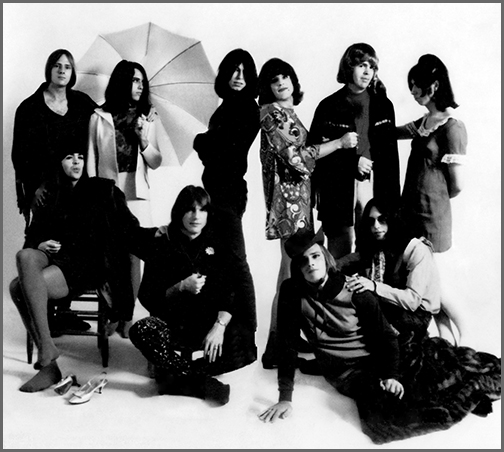
This is the infamous "rejected photo" for the cover.

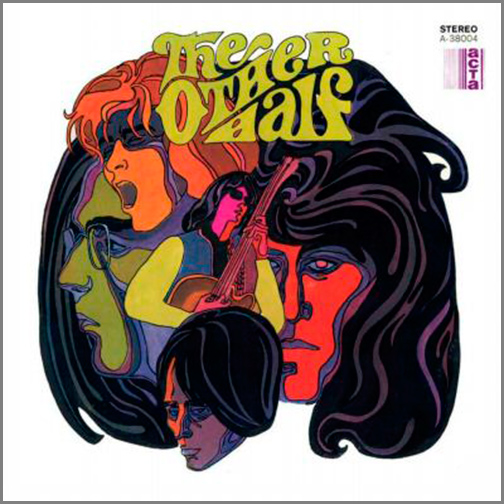
This is the "replacement cover."


CHAPTER 12: Steel knives
On Tuesday, September 14, 1968, a new crime drama, The Mod Squad, debuted on ABC-TV as part of its new prime time lineup. The opening episode, "The Teeth of the Barracuda," included a scene in a psychedelic night club, and for a few fleeting moments, the Other Half could be seen and heard on TV sets all over the country, playing their LSD love song "Oz Lee Eaves Drops" and a short snatch of "Bad Day."
The sequence had been filmed earlier that year at the Spectrum 2000 club (previously known as Ciro's) as part of a 74-minute pilot. When the show was picked up, the episode was cut down to 60 minutes, including commercials.
"We got that through my dad," explains Geoff. "He worked on that show. It was filmed at Ciro's, which was one of the clubs I used to hang out before I was in a band. I used to see the Byrds there all the time. I loved the Byrds. They were a loud, powerful folk band and they played Ciro's a lot. That was a cool club and they were really good. I don't really remember the shoot, I just remember it was just a gig, because my dad's in the biz I wasn't enamored with, 'Oh boy, we're gonna be on a TV episode!' So it was just a gig, and all I told my dad was, 'Make sure you get some shots of me!' I got about one second; that was it!" [laughs]
Westen's brother Danny appeared as an extra in the scene. "He wanted to be an actor," says Geoff, "and again because of my dad he got into the Extras Guild. He'd call in every day to see if there was somewhere he could go, and usually he would do it because you got a free lunch out of it."
"We went down to Ciro's on Sunset and they brought in all the people, and they made the stage," remembers Larry. "I had visions like you see old movies, especially old beach movies, where the band plays a whole song, and then parked down the road they play another song. So I was excited: 'I'm gonna be in a movie!' So we worked twelve hours the first day. We went in there and got that set up and it was blazing hot. They didn't have the air conditioning on or something, and I'd chosen to wear a wool jacket. So they had our record and they said, 'OK guys. Go!' And we'd start playing and the record would start playing, and after about four hours or something we broke for lunch. When we came back I didn't have the jacket on because I was soaked. We get up there: 'Go!' We're up there playing and then all of a sudden you hear, 'Cut! Stop!' Some lady with a clipboard comes up: 'Didn't you have a jacket on?' Continuity lady. 'Yes.' 'Well, put it back on!'"
"I vaguely remember it," says Randy, who'd had some previous film experience with the Sons of Adam in The Slender Thread. "I never enjoyed doing movies. You spent 12 hours sitting around waiting for them to get everything together. It used to drive me nuts. And the people in show business, the movie end of it, they were so fake. It drove you nuts! They were all trying their best to do anything they could think of to get attention, so you'd never deal with anybody on a sincere level, it was weird. Everybody was trying their damnedest not to be themselves. I could never be in movies because I don't know how to be that way. I'm just too—what you see is what you get. They'd spend twelve hours filming twenty seconds. I just couldn't get that. No wonder they burned through money."
"It was an all-day shoot and by the time the cutting room floor was littered with everything we were in there for two or three different takes of a song," remembers Ron. "Sometimes [the camera is] on the crowd and sometimes it's on us. I actually thought it was pretty good. I got some screen time out of that."
"I never did see the movie until six years later," says Larry. "A guy was being murdered on the beach or something while we're playing whatever song it was. And then I watched and they played some music and they never did show us. Well, if you keep watching, they do the credits and then the movie and then more credits, that approach, and down the line two guys at the bar are talking and the camera zooms in and I get my one and a half seconds of fame. They zoom in on the drummer and when they pull back, there I am! And then they pull back again, there's Randy for a second. The other two guys I don't know if they even made it. I don't think they're even in it. So we shot twelve hours of film and all but three seconds landed on the floor! But I was in a movie!"
The group's blink-and-you'll-miss-them primetime moment was an underwhelming last hurrah. By the time "Teeth of the Barracuda" aired, the Other Half had splintered. For Randy Holden, the disappointment over the album was too much to handle and he threw in the towel. "You could see everything was gonna go nowhere," he says. "They'd taken what had had potential to be a golden goose and killed it. Stabbed it with their steel knives."
Some of the band wanted to establish a more permanent base in San Francisco, an option Randy was not willing to consider. "I remember hearing some talk about wanting to move to San Francisco," he says. "But I wouldn't have done that no matter what." He was also going through some difficulties with his marriage at the time, which only compounded his feelings of despair. "He was having a lot of trouble at home," remembers Ron. "His wife ended up leaving and that really kind of put him over the edge, and so that was kind of it."
Geoff Westen, too, decided it was time to move on. "Toward the end of the band, I thought we were a one-trick pony band, just all power and volume and not much musicality. After a couple of years, I'd had the opportunity to see other bands, like the Airplane or Quicksilver or Big Brother—these were bands who were making it and we'd be opening for them or watching them perform and I'm going [whispers] 'We're not as good as these guys.' It started bothering me. I started thinking, 'Where do we go from here? They're just better…'"

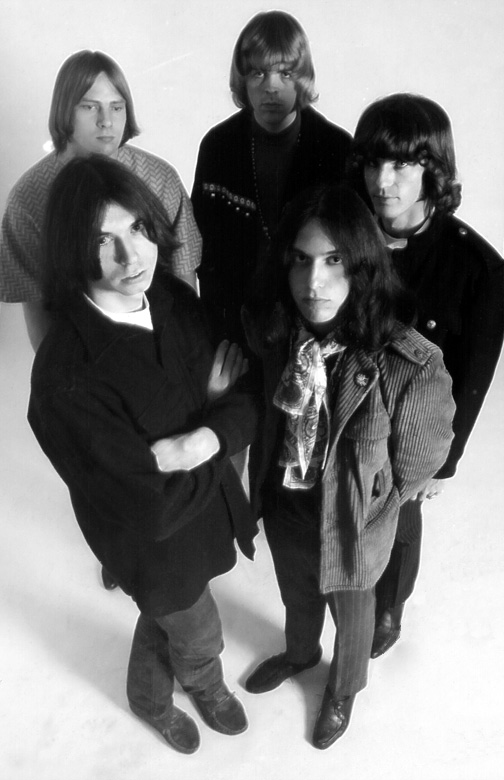
Ron Joins the Band


CHAPTER 13: Sidelines
The departure of Randy and Geoff came as a surprise to the others. "Nobody saw it coming," remembers Larry. After some discussion, the remaining members decided to continue as the Other Half. "Ron Saurman and Jeff Nowlen were both big fanatics about San Francisco, and at that time it was an easy conversation because that's where we had most of our fun success was San Francisco. So Jeff Nowlen, Ron Saurman and I moved to San Francisco and we're gonna be a four-piece, get a good guitar player. That was our plan."
Tom Hundley, who'd played with Saurman in the Jayhawkers, came out from Michigan to play lead guitar. The four-piece Other Half moved to Mill Valley and started working on new material. Larry Goldberg and Hank Levine were now out of the picture, as was PaK Management, so the band struggled forward under their own steam. This lineup played only four or five gigs, including a show at Winterland on January 25, 1969, with Moby Grape, It's A Beautiful Day, and Tim Hardin.
Rumors of an unreleased second album are merely wishful thinking. Both Brown and Saurman confirm that they never made it into the studio. "We had planned to, but we never got it going," says Larry. "In the process, we're starving to death, so we ended up supporting ourselves with illegal business. And we weren't the only ones. Everyone was. It was either a sideline or whatever. After we got that going, we did less and less."
When Tom Hundley returned to Michigan, they again found themselves searching for a lead guitarist. "There was another crazy guitar player," says Larry. "I can't remember his name, I just remember he was nuts. He liked Stratocaster guitars with Gibson necks, so we put a Gibson neck on a Stratocaster, ruining both guitars! [laughs] He taught me a few good licks, but mostly he was kind of nuts."
Although sideline activities were consuming more of their time than music, the remnants of the Other Half were still trying to make a go of it as late as the fall of 1970 when they came down to LA in search of guitar players.
"We were staying at the Landmark Motel in Hollywood," remembers Saurman. "The Landmark was a musicians' motel at that point. We did some jamming with Savoy Brown, they were in town. We had a rehearsal studio. As a matter of fact, Janis was down there staying at the Landmark and we were partying a little bit with her the night she died. We left her room just as her connection showed up. We and our road manager, Rick Abbott, were down by the swimming pool and the door flies open to her room at one end of the pool, and someone says, 'Help! Help! She's not breathing!' And that was it. She was gone! Jeff Nowlen was there, and me and Larry, and our road manager. We knew Janis fairly well from San Francisco, the Haight Street crowd."
"We were there at the Landmark," confirms Larry, although his account differs somewhat from Ron's. "We were all downstairs. Janis came down while I wasn't there apparently, or somebody did. I just came back and all of a sudden everybody's going, 'Wow! They found Janis!' So I wasn't really in on it, but I was there at the time. There was a big commotion and we're all paranoid because we're holding. We didn't want to attract any attention, I remember that. It's kind of a blur."
According to all other accounts, Janis' body was not discovered until the next morning, October 4. The cause of death was an overdose of heroin.
This squalid episode at the Landmark is as stark and sobering an example as you could ask for that the carefree days of the LA love-ins and the San Francisco ballrooms were buried and dead. The remaining half of the Other Half faced up to that fact shortly afterwards.
"We never did find a guitar player we wanted, so I don't know what we did after that," sighs Larry. "We came back up to Mill Valley and then just fooled around and never did get it off the ground."
"We were kind of just about at the end of anything that we could come up with in the collaboration," concludes Ron. "It didn't come together at that point. That was the end of that."
Saurman continued to play music with various bands, moving back and forth between California and Michigan. Eventually he settled in Marin County where he ran a couple of recording facilities, including Marin Recorders. Today he works as an electrician and project manager in the San Francisco area.
Meanwhile, amongst other misadventures, Larry played for a while with Black Kangaroo, the band led by Peter Kaukonen, Jorma's brother. Today he's settled in Hemet, California, where he plays with a cover band called the Illegal Sweedes.



In The Studio


CHAPTER 14: Peaked Out
Meanwhile, back in 1968 at the Acoustic Control warehouse in LA, Randy Holden and Geoff Westen briefly teamed up to see if they could get something new happening. "I remember just the two of us going to Acoustic at night and just blowing our brains out with amplifiers," remembers Geoff. "We had access to anything we wanted. I think it might've only lasted a week or two before we were, 'What are we doing? It's just the two of us! We gotta do a little more than this.'"
Randy thinks Mike Port may have also been in on some of these jam sessions, on bass, and possibly Jeff Salisbury of the Joint Effort on drums. "Whatever we were doing, nothing worked," he says. "It petered out real fast. It just wasn't happening."
By this point anyway, Westen felt he was ready to go in a different direction. "When I came out of the Other Half, I knew everything Randy knew," he says. "I was a sponge. I watched everything that was going on, because after about two years I was saying, 'You know, I want to do this more seriously.' I knew what it took to be in a band, I knew what it took to have a concept for a band, and how to market a band—the things you have to do if you're seriously trying to have a career in the business. That could've been something that pulled Randy and I apart because I was definitely wanting to go more pop and Randy wanted to go more volume. I'd peaked out on the volume thing, so that could've been why Randy and I thinking we could do something together after we left San Francisco never panned out."
Geoff settled in Laurel Canyon and in 1969 joined CK Strong, a band formed by singer Lynn Carey and lead guitarist Jefferson Kewley—the C and the K respectively. "The guitarist lived in WC Fields' old house in Laurel Canyon," remembers Geoff, "and we used to rehearse in this little basement dungeon in the bottom of that house. I lived in the canyon, they lived in the canyon, and we must've somehow crossed paths." Danny Woody played drums for a while, and it was through him that they met Christopher Brooks, who became their bass player. Ron Grinnell had taken over on drums by the time they recorded their self-titled album, which was released on Epic later that year. On it, Westen sings lead vocals on three of his own compositions, "Affairs," "Been So Long," and "Rolling Down the Highway."
In the seventies, Westen and his wife Patricia Mitsui opened Oz Studios and Zo Concepts on North Cahuenga in Hollywood. "Oz Studios was an all-purpose rock 'n' roll marketing company, providing graphic design, costume design, touring support, etc. I eventually turned the backroom of the design studio into a rehearsal/recording studio." David Bowie and Iggy Pop stopped by one night in May 1975 and recorded four demos, including "Turn Blue," elements from which were used for the version eventually released on Lust for Life. Dr John was a regular in the rehearsal room.
"Our clients for the design side of things included Pink Floyd, Queen, Jethro Tull—the list goes on and on," adds Geoff. "Patti and I designed wardrobe for the legendary LA female band Fanny." They also designed the cover for Steely Dan's Aja album.
Westen also continued to write songs. "Lovin' You" was released as a solo single by Shocking Blue singer Mariska Veres in 1976, and Alice Cooper recorded "Leather Boots" for his 1980 album Flush the Fashion. He also co-wrote a song with Simon Stokes, "No Confidence," which appeared on his 2002 album Honky (see UT#46). In the late '70s Westen formed the Balls, a new wave/power pop band with singer/guitarist Ron Magness. "The Balls was a local LA Sunset Strip band, playing the Whisky and the Troubadour and those kinds of clubs," says Westen. After signing with an English production company, he and Magness relocated to London where they recorded an album's worth of material, partly at Pete Townshend's demo studio and partly at the Who's Ramport Studio in Battersea. Two singles were released in 1981 on Towerbell Records: "I Love the Balls" / "Don't Touch Me" as the Balls, and "Panic" / "Never Dress Right" as the Scoop.
After the Balls broke up, Westen continued to work both on the graphics and music side of the business. He also started actively recording again, playing and programming all the music in his own studio. "Since the early 2000s I've put together six albums, three of them are instrumental, which I call Rock Ambient, and three of them are songs." All are available on his Disturbing Music label which can be investigated at disturbingmusic.com


More In The Studio


CHAPTER 15: Fall and Rise
After leaving the Other Half, Randy Holden's life went into a slow tailspin. "My own personal life kind of fell apart during that era," he says, "because I didn't have a band, I wasn't making any money, and my wife and I parted ways because I wasn't able to take care of her as a man's supposed to do—so I can't blame her for it. That was kind of depressing for me. Mike Port was living in a garage so I moved in with him for a while. We were both living in this garage in the San Fernando Valley. That was a very bleak time. No money. I remember I could afford a cup of Nutella Yogurt once a day along with a handful of raw cashews, and that was all I had to eat for a long time. It was a very difficult time. It was hard to figure out what to do. On one side I was really depressed, but I couldn't let that leak in and destroy my dream. I remember, Mike and I would practice, just the two of us, just dry guitar and bass, and play—pretty much doing that daily. That was a really tough time. No money, no food, no transportation. That's suicidal time."
Just prior to separating with his wife, Randy had an informal tryout for what could've been a very interesting collaboration. "I got together with the Doors," he remembers. "They wanted to have a bass player. They'd never had a bass player so they came up to my mother-in-law's house up in Altadena and we jammed. I played bass and I thought, 'What the hell, I'd love to play bass with these guys.' It was fun music and I didn't have a gig at the time. Jim didn't come, but Ray and Robby and John came, and we played really well together. It sounded really good. Robby and John really liked it, they really wanted to do it, but Ray didn't want to. He said it changed the sound too radically. And he was probably right—it did, but it wasn't a bad change, it was a good change."
"And I had greater schemes in my mind," he says with a grin. "I was thinking in my mind that it's not gonna be long before I'll be playing guitar and Robby will be playing bass! [laughs] I never thought that Robby could play guitar very well. I didn't care for his sound; I didn't care for his style. I knew I could rock it. I thought I could kick ass with this band. They had a style that was kind of drug-induced—can I say it that way? I liked what they did though. Obviously a lot of people did because they were huge! I just had these visions—because John is a good drummer, he's solid, and Ray played a nice keyboard. I just thought I could rock out with Jim Morrison as singer. He and I got along great. I didn't have any problem with him. He probably wouldn't be dead now."
On another occasion during this period, Randy played guitar with Love for a show at the Kaleidoscope. "I lived right behind that place, and Love had a show there and Mike Stuart came pounding on my door saying, 'Johnny Echols just got arrested for heroin and we don't have a guitar player. Can you stand in for him tonight?' I was like woah! I needed a guitar so I went across the street to this music store and there's a guy there, Seymour Drugan was his name. I said, 'Seymour, can I borrow an SG for tonight? I've got a show across the street and I don't have a guitar.' And he said, 'Sure.' So I picked it up and I went over, and it sounded really good through my Dual Showmans. Everybody said it was the best they'd ever heard Love. We kicked ass that night! We really sounded good. We tore the house down. Mike played great, Bryan [MacLean] played great. I was really surprised at the bass player [Ken Forssi]. I was surprised how good he played because I'd never thought much of him up to that point."
According to Randy, the only person who wasn't happy was Arthur Lee, who didn't like being upstaged. "I did a long guitar solo—the one I usually did, that deal—and that pissed Arthur off! So he went off to the end of the stage and laid down, and put a tambourine on his foot and started waving it around! [laughs] That was funny."
In 1969, Randy joined Blue Cheer, replacing Leigh Stephens. He toured America and Europe with the group, but quit the band midway through sessions for the New Improved album. Randy's contributions appeared as Side 2 of that album, arguably the best side of any Blue Cheer album, especially the incredible "Peace of Mind," which had once been a part of the Other Half's repertoire. (Randy's tenure with Blue Cheer will be covered in a separate article next issue.)
After Blue Cheer, Randy teamed up with drummer and keyboard player Chris Lockheed to record the Population II album. Population II was to be Randy's ultimate statement, taking his "never turn down EVER" ethos to a new level. "That was going to be it," says Randy. "This was going to be the biggest rock band in the world. I was really aiming for it with that one." However, the record company kept delaying the release, and eventually refused point black to release Randy from his contract. Population II was never given an official release, although a small number of copies were pressed, no doubt as a tax write-off, and immediately consigned to the cutout bins. (An original copy now goes for around a grand.)
"That ended my career," says Randy. "I couldn't get out of the contract so I couldn't sign with anybody else. They wouldn't release my album. And there I was—there was nothing I could do. That just shut the whole door on everything."
Not long afterwards, Randy gave up music completely and moved to Hawaii. "I was really emotionally devastated," he says. "It was such a life changing thing, I couldn't even comprehend. I just wanted to go as far away as I could. Go into the jungle and hide and just lose myself. I thought I'd go there and paint. Nobody could fuck with me if I was painting."
Before leaving for Hawaii though, he reunited with Larry Brown and Danny Woody. "After the Population II thing just never happened, Danny and Larry and I attempted to get back together for another thing. But we were all just stone broke. Nobody had a penny to their name so we just couldn't pull anything off. But Danny was playing much better drums then. He was playing more creative fills."
The three of them rehearsed after hours at a music store, and crashed on the floor at Larry's mother's house. "We had no way to put a foundation under us to even pay a rent on a place," remembers Randy. "We did a couple of rehearsals at a friend of mine's music store and it never seemed to come together feeling-wise, but it was probably just because of the stress of survival."
According to Danny, Wolfman Jack was interested in financing some recording sessions, but ultimately nothing came of it.
For Randy Holden, it was the end of the line. In 1971 he put down his guitar and moved to Hawaii. It would be twenty years before he picked up a guitar again. The thought of playing just brought back too many painful memories. "For years I had a music dream every night," he confesses. "I was just about to go onstage, the sound was really great, sound check, and then something would happen. It was a depressing dream, because I couldn't wait to go onstage.
"It was hard. But I fell in love with the ocean over there and started fishing for big game. And that was really exciting! I just loved it! It emotionally took the place of my music. There was nothing like trawling at 15 knots, which is really fast, and sometimes running at 30 knots to catch up with a big school of porpoises diving and birds feeding and big tuna crashing, and you'd get your lures out in front of them and—WOW! Reels go off, it's crazy! It was very exciting. I really loved that. So that replaced it for me, and I got into boats and I did that about a dozen years. Then I went through a horrible divorce. I had a one-year-old son that I had to figure out how to raise. I never expected anything like that in my life. Reality for me was my head felt like an egg that was just cracked. I couldn't comprehend anything. It was too much to take in. So I couldn't live on the island anymore so I left and went back east. I didn't know what to do with my life. Somebody burned my house down, and that had to do with her. I dreamt that house and I drew the plans and I built it with my own hands, and when it was nothing but ashes my heart was broken again. That was in Hawaii. So I left, I had no idea what I was going to do. I had insurance money from the house, but I was under-insured so I couldn't replace it, so that was just a real dilemma. You talk about a roller coaster life! Never a dull moment."
Eventually Randy got his life back on track, and in 1991 he started playing guitar again. Since then he's recorded and released three solo albums, Guitar God (1997), Raptor (2008) and Psychedelic Blue (2015). He's happily married to the artist Ruth Mayer. "I've been blessed. I've got the most magnificent lady for a wife. We've been together over twenty years now and I love her, she's phenomenal. I adore her. She's such a magnificent artist.
"Life has its ups and downs. Sometimes the downs are so bad you don't think you'll get through 'em, and then something changes."




CHAPTER 16: Come So Far
Ups and downs. Danny Woody had recently completed a three and a half year stretch in a Mexican prison, much of it strung out on heroin, when he met his father for the first time. He'd been busted in Mazatlan in line for the ferry to La Paz with three hundred kilos of Oaxaca red hair marijuana the back of his truck. A dumb move. That was in January 1974. Now it was 1979 and at the age of 34 he was on parole and meeting his real father for the first time.
Verdi Woodward was an accomplished tenor sax player who'd played bebop jazz with some of the greats in LA's South Central clubs in the forties and fifties. He was also a serious heroin addict, who resorted to theft, forgery, burglary, and armed robbery to feed his habit. Inevitably this led to long stretches in prison. It wasn't until the early seventies that he finally broke the cycle of addiction and prison. He later wrote about these experiences in an extraordinary book, Hope to Die: A Memoir of Jazz and Justice. "After you read my father's book you can understand a little bit more about the music and drugs that run through this bloodline," says Danny.
But until he was 34 years old, Danny Woody knew nothing of his father or of the many parallels in their lives. "When I met him it was something really strange," says Danny. "It was scary because I looked into his eyes and I'd never seen that vibe in anybody else's eyes. He walked like me and he had a lot of similar mannerisms that I had. So it was like 'How did this happen?' We were like carbon copies of each other. Our stories were identical in many, many ways, and our personalities and our focus in life. Because, like him, all I wanted to do was play music."
Verdi Woodward was 'Woody' to everyone who ever knew him, just as Danny had been 'Woody' to all his friends. As soon as his father came back into his life, Danny Woody was 'Danny' again. They started playing music together, and his father soon recognized that Danny had a problem. "He knew what to do because he hadn't had a drink for three and a half years, but he had been going to AA for twenty and had never been able to make it. So he scooped me up. He took me down to the Westside AA program, West Los Angeles, and that's the place, that room, those people, saved my life. He gave me the greatest gift that I ever had and still have now, which is not doing any drugs all these years."
It was some time in the early or mid-eighties that Danny remembers Jeff Nowlen coming to one of the Westside AA meetings. They hadn't seen each other in more than a decade. Jeff looked rough. "He borrowed some money from me. He was broke and strung out. He was definitely playing around with hard drugs. I gave him some money and I never saw him again. It didn't look good, I can tell you that."
Larry Brown also saw Jeff around this same time and has similar memories of his condition. It's not known what Nowlen had been through prior to that, or what happened in his life afterwards. We know only this: Jeffrey Albert Nowlen died on April 8, 1997. He was 53 years old.
"I think [hard drugs] took him out," says Danny, "because they would've taken me out. I wouldn't be talking to you on the phone now if I hadn't found this."
Danny and his father played jazz together on an off for more than twenty years, and remained close until Verdi Woodward's death around 2010. In the early 2000s Danny became music director of the Portman Ritz-Carlton in Shanghai, China, drumming in a jazz combo in their lounge at night and refurbishing and selling vintage collectible Chang Jiang motorcycles by day. These days he makes his home in Bangkok, Thailand, and sings jazz in clubs there as Danny California. "All I ever wanted to do was play music," he says. "That's all I ever wanted to do for a million years. I finally got lucky with it because it's a tough deal, especially if you want to play jazz—forget about it! Who wants to hear that shit! [laughs] Anyway, I made a living out of it and it's been good to me."
Danny still harbors strong emotions about his days with the Other Half. "It was an exciting time to be young and to be alive, without a doubt. I still have a good feeling for all these guys. Can you believe it? This happened in '66 and I still feel bad about it in 2018 because I just loved that band! I loved that music and that whole thing was powerful. We could've developed together. I think we could've grown along some kind of spiritual lines if we could've just…" He doesn't finish the thought. "But it wasn't meant to be, so there you have it. That's the way life is."
Randy Holden has many regrets and frustrations about how the Other Half's story played out—especially on record. Live though: "We were good," he admits. "There was no question we were fantastic!"
"Once I considered it a flop, I tried to quit thinking about it," reflects Larry Brown. "'Ah, you had your chance and one thing or another prevented you…' But of course it can't be my fault. You know what I mean? I have gone from being pissed off about it to being grateful. I was there, did a bunch of gigs with the Doors—I can actually say that and mean it!"
Geoff Westen remembers his time with the Other Half with affection. "I loved the guys; I thought being in a band was the coolest thing ever. I had a blast. If I was 20 years old again I'd want to give it another shot—maybe we'd do it better this time."
Dedicated to Jeff Nowlen, 1943-1997.


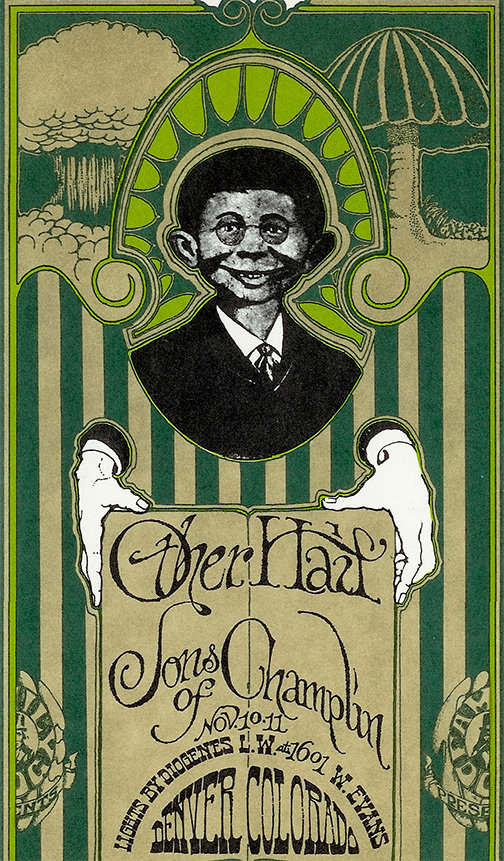
One of the Last Shows

